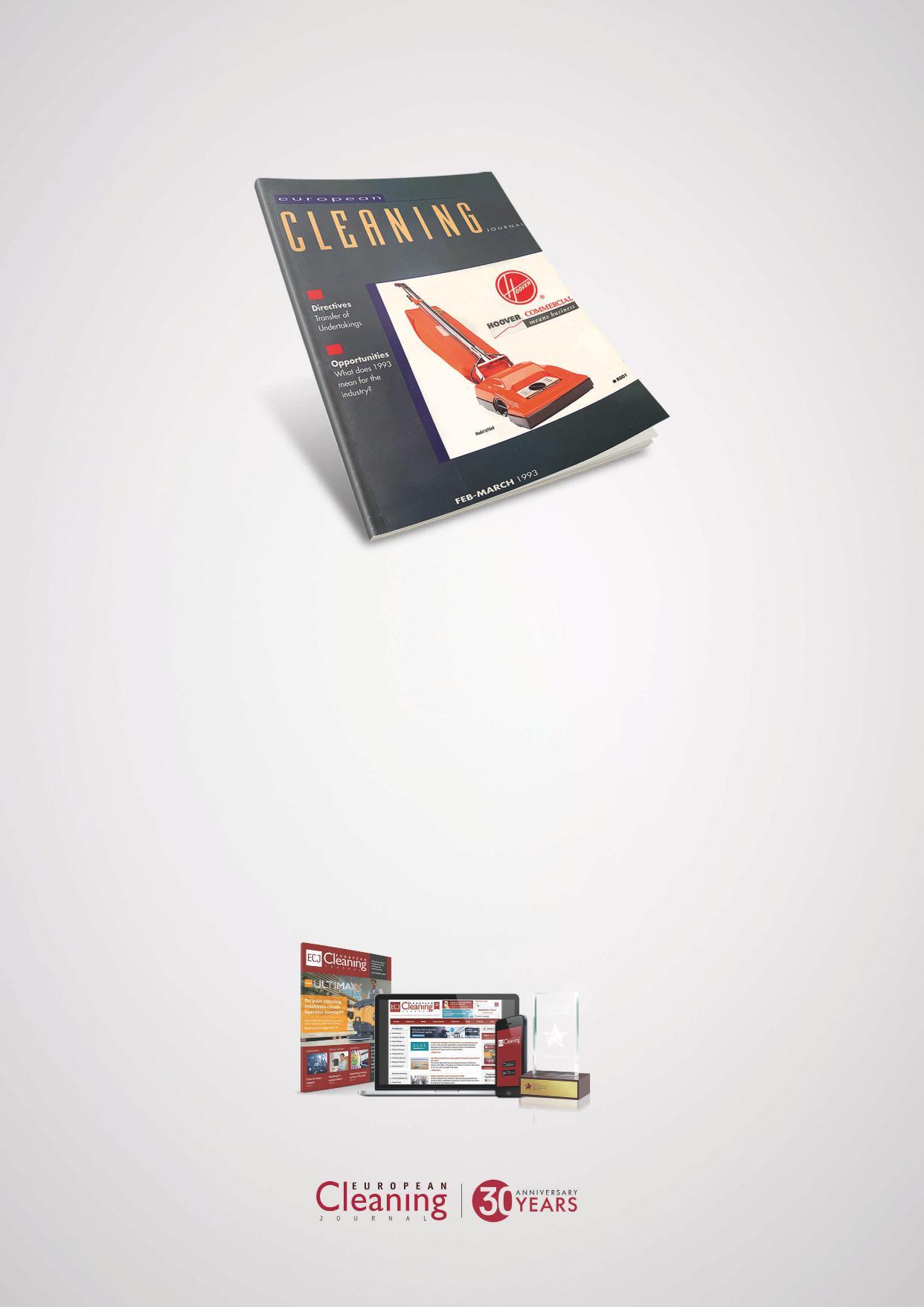












T +39 010 570 4948


F +39 010 553 0088 info@mediapointsrl.it www. mediapointsrl.it

















T +39 010 570 4948


F +39 010 553 0088 info@mediapointsrl.it www. mediapointsrl.it



Tickets are now available for the European Cleaning & Hygiene Awards 2023 gala dinner.

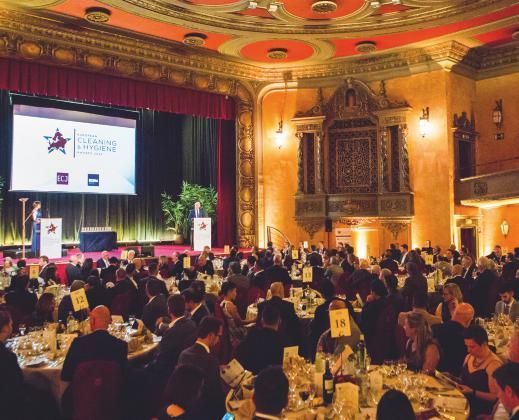
Organised by ECJ, this year’s winners will be announced on October 5 during a night of celebration in The Round Room at The Mansion House in Dublin.
The European Cleaning & Hygiene Awards are a celebration of excellence in the professional cleaning industry. As the only pan-European awards for the sector, they provide the opportunity for businesses and individuals from across the continent to share their stories of success.
The winners for 2023 will be revealed during the gala dinner in Dublin on October 5, which promises to be a night full of entertainment and celebration. Over 300 people were at the Brussels event in 2022.
ECJ editor Michelle Marshall said: “Once again I and my fellow judges have been so impressed with the numbers and standard of entries for this year’s awards. We are very excited about bringing the industry together in Dublin this autumn to tell you all about our finalists and announce our winners.”
But even if you’re not a finalists in this year’s awards there are plenty of reasons why the event has become such a hot ticket:
Team building - This is not just an event for those nominated for an award - treating your staff to a night out at a high-profile industry dinner can make them
feel truly valued
Let us entertain you – This is not just an awards dinner, it’s an evening full of entertainment and music - with dancing until 2am in one of Europe’s most lively cities
Be inspired– Even if you’re not up for an award, this is your chance to take a look at what the rest of the industry is doing. You could get some real insight into best practice and come away with fresh ideas.
Networking – There will be industry VIPs, business owners and key decision makers there - eager to connect. At the end of the evening you’ll have some great new contacts.
It’s possible to book tables of 10 people, half tables or individual places.
On the night trophies will be presented in 10 categories:
• Best Use of Smart Solutions by Service Providers
• Investment in Training
• Excellence in Client-Contractor Partnerships
• Start-Up Business of the Year
• Sustainability - Best Practice
• Commitment to Diversity in the Workforce
• Best Initiative Raising the Profile of the Cleaning Sector
• Technological Innovation of the Year
• Leader of the Year
• Rising Star Michelle Marshall concluded: ”We would love as many people as possible to join us for what promises to be a truly memorable night.”
To find out more visit: www. echawards.com/attend
May 9-11
ISSA Pulire
Milan, Italy www.issapulire.com
September 19-22
CMS
Berlin, Germany www.cms-berlin.de
October 5
EuropeanCleaning&HygieneAwards

Dublin, Ireland www.echawards.com
October 16-19
ISSA North America
Las Vegas, USA www.issa.com
November 7-9
Hygienalia
Madrid, Spain www.hygienalia.com
May 14-17 2024
Interclean Amserdam
Amsterdam, Netherlands
www.intercleanshow.com
October 21-24 2024
ISSA North America
Las Vegas, USA www.issa.com
November 10-13 2025
ISSA North America
Chicago, USA www.issa.com
October 5-8 2026
ISSA North America
Las Vegas, USA www.issa.com
To have your event included in the Events section, contact ECJ via email at: michelle@europeancleaningjournal.com


















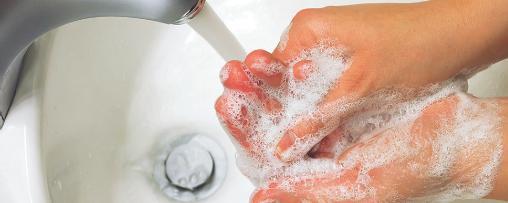
UK public health leaders are warning workers to improve their hand hygiene after scientists found large numbers of potentially dangerous bacteria and fungi in communal workplace kitchens.



Microbiologists analysed swabs taken from shared kitchen areas across a range of sectors including offices and construction sites. Swab samples revealed the presence of E.coli - a bacterium that can lead to a range of gastrointestinal illnesses - on a coffee machine, fridge door handle and microwave control panel.

Pseudomonas, which is often




associated with respiratory infections, was also discovered on these three surfaces. And all 11 kitchen items tested revealed evidence of Klebsiella, a microbe usually found in the human intestine and spread via faeces.

Each item was also found to be rife with fungi, with fridge door handles among the worst surfaces affected. The findings follow a study commissioned by the Champs Public Health Collaborative, an organisation led by Cheshire and Merseyside’s nine directors of public health.




Study leader Dr Adam Roberts said the bacteria and fungi found on kitchen surfaces could

Au Royaume-Uni, des responsables de la santé publique ont convié les travailleurs à une meilleure hygiène des mains après la découverte de bactéries et moisissures dangereuses dans des cuisines communautaires.




pose a threat to anyone with a weakened immune system.







“Some microbes can lead to illness and infection if ingested into our bodies, and the easiest way to help prevent this from happening is to wash our hands regularly - especially after going to the toilet and before and after eating,” he said.
Im Vereinigten Königreich haben führende Persönlichkeiten im Bereich öffentliche Gesundheit Arbeitnehmer zu einer Verbesserung ihrer Handhygiene ermahnt, nachdem Wissenschaftler potenziell gefährliche Bakterien und Pilze in Gemeinschaftsküchen an Arbeitsplätzen gefunden hatten.
The study is part of a wider campaign called Simple Things which is being run by the Champs Public Health Collaborative in partnership with NHS Cheshire and Merseyside. The aim of the campaign is to encourage people to help reduce the spread of illnesses such as colds, flu and the norovirus.






Nel Regno Unito, i leader della sanità pubblica stanno avvertendo i lavoratori di migliorare la loro igiene delle mani dopo che gli scienziati hanno scoperto dei batteri e dei funghi potenzialmente pericolosi nelle cucine comuni dei luoghi di lavoro.

In Spain, Juan Díez de los Ríos, president of contract cleaning association Aspel and member of the CEOE (Spanish Confederation of Business Organisations), has declared that “we cannot give what we do not have”.

This is following the announcement by the Council of Ministers of the new increase in the minimum wage from €1,000 to €1,080 per month, a rise of eight per cent.
According to Díez de los Ríos: “It is not the amount that is important for our sector but the fact the Government continues to forget service sectors have been bearing additional costs of

all kinds for many years.”
He added: “We do not have the tool to review prices, and on this we are in agreement with the employers’ associations and the trade unions - but we cannot get them to listen to us even so.”
Díez de los Ríos criticised the fact this new rise in the minimum wage is happening within an economic context marked by uncertainty and that it continues to disrupt collective bargaining. He said: “This rise affects 53 per cent of cleaning agreements and 32 per cent of workers. How can we sit down at the table to negotiate with the
other party if the Government has already given us a done deal and we have no margin in those cleaning contracts already signed with their compulsory extensions?”
Law reforms call
He also explained that public contracts constitute over 40 per cent of turnover which amounted to almost €11,000 million in 2022 - with a labour cost element of more than 85 per cent.
So Aspel is calling for a reform to the law of deindexation to allow for modification of the value of contracts already signed.
In the US, Solenis and Diversey have entered into an agreement for Solenis to acquire Diversey in an all-cash transaction valued at an enterprise value of approximately $4.6 billion. Upon completion Diversey will become a private company.

Headquartered in Delaware, Solenis is a leading manufacturer of speciality chemicals used in waterintensive industries, which was acquired by Platinum Equity in 2021. Bain Capital, which invested in Diversey in 2017 and subsequently took the company public in 2021, is currently the largest shareholder of Diversey.


•
Espagne, le président d’ASPEL, l’association professionnelle de la propreté, a soulevé des objections devant une nouvelle augmentation du salaire minimum.
• Aux États-Unis, le fabricant chimique Solenis va reprendre Diversey.
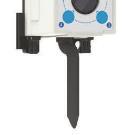


- these gather data that can support a demand-driven approach to cleaning rather than a more traditional rota. That also helps clients to better understand patterns in building usage.
have patience with those who find the transition more challenging, we try to bring them along with us at their pace.
reduction in the use of energy, water and chemicals.
Sodexo UK & Ireland’s head of cleaning Lauren Kyle speaks to ECJ about how the services provider is focusing on the role of digital technology and how it can impact on the client and staff experience.
At Sodexo we are always considering how we can incorporate the latest technologies into the way we deliver cleaning services, whether it’s digital solutions or autonomous machines.
Any new technology we introduce must be for the right reasons, it must add value. And it’s always done in consultation with our cleaning teams. A great example of this is our use of cleaning robots - or ‘cobots’, which support our teams in delivering some of their more laborious and timeconsuming tasks.
Most commercially developed cobots focus on floor cleaning, and with this solution looking after the bulk of that type of work, it frees our team up to prioritise tasks that require their greater dexterity and skill. These autonomous machines can be a really valuable addition.
Another area where we are doing extensive work is in the use of sensors in client buildings
What we have found on some sites, however, for example with sensors monitoring traffic in washrooms, is that much of it is about common sense. For instance we know from experience there will be high levels of traffic in schools or stadiums at very specific times so we question whether there is justification for having more technology involved.
In many cases though, using sensors can help us to focus on the areas that need work so staff don’t have to waste time cleaning unnecessarily, resulting in a more streamlined and efficient service for clients.
We are now finding QR codes really popular - our team can simply scan them to see the areas of a room to be cleaned. Of course this does sometimes raise another issue with clients, as they have to be stuck to the walls.
While I recognise that we want to implement the latest technology across services, it is only through collaboration and input from our frontline teams this is made possible. The interaction between people and technology is vital.
How do our teams respond? We must always manage change carefully of course and we recently surveyed frontline teams at one of our client sites to ask their opinion on the new tech we’re introducing. We had an overwhelmingly positive reaction because ultimately all our people are keen to embrace technology if it will make their life easier. Naturally we must
• Lauren Kyle, responsable du nettoyage chez Sodexo UK & Ireland, explique à l’ECJ comment le fournisseur de services se concentre sur le rôle de la technologie numérique et comment cela peut avoir un impact sur l’expérience des clients et du personnel.
• Dans les écoles publiques de Nouvelle Galles du Sud, en Australie, l’on ne donne qu’une minute aux nettoyeurs pour éponger les planchers, nettoyer les toilettes et vider les poubelles.
Hand in hand with technological innovation within the business is our focus on sustainability, specifically reducing our carbon footprint. New technology helps us to work towards a more demand-driven approach to service provision, which in turn contributes to a
For me it’s genuinely exciting to be part of this transition to smarter ways of working. Our teams of local and global cleaning experts are continually collaborating to create solutions underpinned by science and operational experience. I’m proud of the positive difference our frontline teams make every day, and I look forward to the data-driven cleaning of the future.
Cleaners of state schools in New South Wales, Australia, are given less than a minute a day to mop floors, clean toilets and empty bins, according to Australia’s United Workers Union.
The UWU claims this is an “impossible workload” and is leading to stress and injury among cleaners.
Documents obtained by the United Workers Union detail how cleaners in state schools are being asked to complete several hundred daily tasks as part of their work routine.
A copy of specifications for one company reveals cleaners are expected to complete 179
• Lauren Kyle, Head of Cleaning bei Sodexo UK & Ireland, spricht mit dem ECJ darüber, wie sich der Dienstleister auf die Rolle der digitalen Technologie konzentriert und wie sie sich auf die Kunden- und Mitarbeitererfahrung auswirken kann.
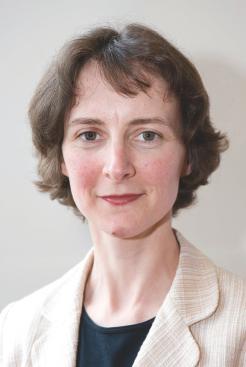
• Die Reinigungskräfte öffentlicher Schulen in New South Wales, Australien, haben weniger als eine Minute pro Tag um Böden zu wischen, Toiletten zu reinigen und Abfalleimer zu leeren.
“regular” tasks as well as dozens more “periodic” ones.
According to the union, the “regular” jobs need to be repeated multiple times which means they could total more than 600 tasks every day. And union chiefs claim this means just 47 seconds is allocated for each task based on the average cleaner’s work.
Linda Revill, property services coordinator at UWU, said this “stopwatch approach” had led to unsafe workloads for one of the lowest-paid professions.
The union is calling for the contracting system to be scrapped.
• Lauren Kyle, responsabile delle pulizie di Sodexo UK & Ireland, parla alla ECJ di come il fornitore di servizi si stia concentrando sul ruolo della tecnologia digitale e di come possa avere un impatto sull’esperienza del cliente e del personale.
• Gli addetti alle pulizie nelle scuole statali del New South Wales in Australia, dispongono di meno di un minuto al giorno per lavare i pavimenti, pulire i bagni e svuotare i cestini

Efficient carpet cleaning rethought: the battery-powered CVS 65/1 carpet vacuum sweeper is perfect for cleaning medium-sized and large areas of carpet. karcher.com
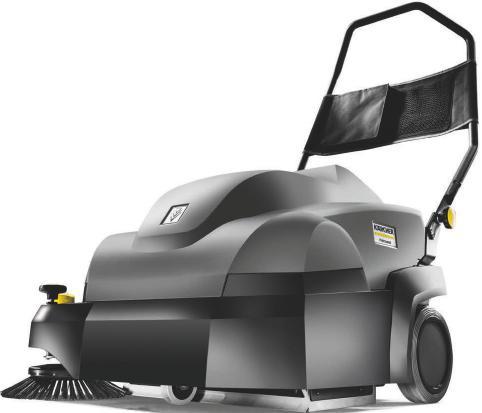
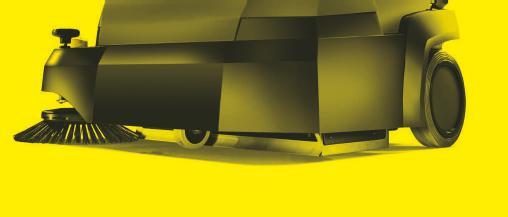

Hand-washing is being carried out less rigorously at a number of hospitals in Ireland after reaching record levels during the pandemic, according to a report.
The Health Service Executive (HSE) target is for 90 per cent compliance measured against 30 hand hygiene opportunities. These include: before and after a clean or aseptic procedure, before and after touching a patient and after touching a patient’s surroundings.

Ireland’s acute hospitals are
required to measure healthcare worker compliance against all 30 hand hygiene opportunities across seven randomly-selected wards in their facility, resulting in a total of 210 opportunities per hospital.
The latest hand-washing audit by the Health Protection Surveillance Centre revealed that national compliance had dipped to 92.6 per cent in May and June last year compared with 93.2 per cent during the previous October-December period. But
Interclean China, the international trade show for cleaning and hygiene in China, is set to return from October 18-20 in Chongqing. This follows three years of closed borders due to the Covid-19 pandemic.
Over 200 exhibitors are expected, more than 40 keynote speakers and 8,000 visitors.
Backed by the longstanding success of parent brand Interclean Amsterdam, Interclean China will cover healthcare, machines, equipment, detergents, washroom, management and mobility solutions, robotics and
Artificial Intelligence (AI).
There will also be conferences, workshops and demonstrations.
The event’s location, Chongqing, is home to 31 million people and an important hub in southwest China.
International companies can participate in the dedicated International Pavilion for a fullservice entry into the Chinese markets. And businesses that first want to see what China has to offer them can join the Explore China business tour. Either email interclean@rai. nl or visit www.intercleanshow. com/china for more information.
• Le lavage des mains se fait moins méticuleusement dans certains hôpitaux irlandais alors qu’il se pratiquait de manière intense pendant la pandémie, rapporte une enquête.
• Interclean China, le salon international de propreté et d’hygiène de Chine, va rouvrir ses portes du 18 au 20 octobre, dans la ville de Chongqing.
some facilities reported lower figures such as 88.6 per cent in the Coombe Maternity hospital; 87.1 per cent at Sligo General Hospital and 84.6 per cent at Wexford General Hospital.
Compliance in general was highest after body-fluid exposure, measuring 95.5 per cent overall. But it fell to 90.1 per cent after touching a patient’s surroundings.
And the only hospital with 100 per cent compliance was Crumlin Children’s Hospital.
Medics were the worst culprits
• Aus einem Bericht geht hervor, dass in Irland in einigen Krankenhäusern die Hände weniger gründlich gewaschen werden, nachdem während der Pandemie Rekordniveaus erreicht wurden.
• Interclean China, die internationale Messe für Reinigung und Hygiene in China, wird vom 18.–20. Oktober in Chongqing stattfinden.
when it came to hand-washing lapses. The latest audit revealed that only 86.4 per cent of medics washed their hands at critical points compared with 94.5 per cent of nurses and 90.3 per cent of auxiliary grades such as healthcare assistants and porters.
Measuring hand hygiene compliance by direct observation is described as the “gold standard” by the World Health Organisation according to the Health Protection Surveillance Centre.
• Un rapporto rivela che in numerosi ospedali in Irlanda, dopo aver raggiunto livelli record durante la pandemia, il lavaggio delle mani viene ora effettuato in modo meno rigoroso.
• Interclean China, la fiera internazionale del settore delle pulizie e dell’igiene in Cina, ritornerà dal 18 al 20 ottobre a Chongqing.

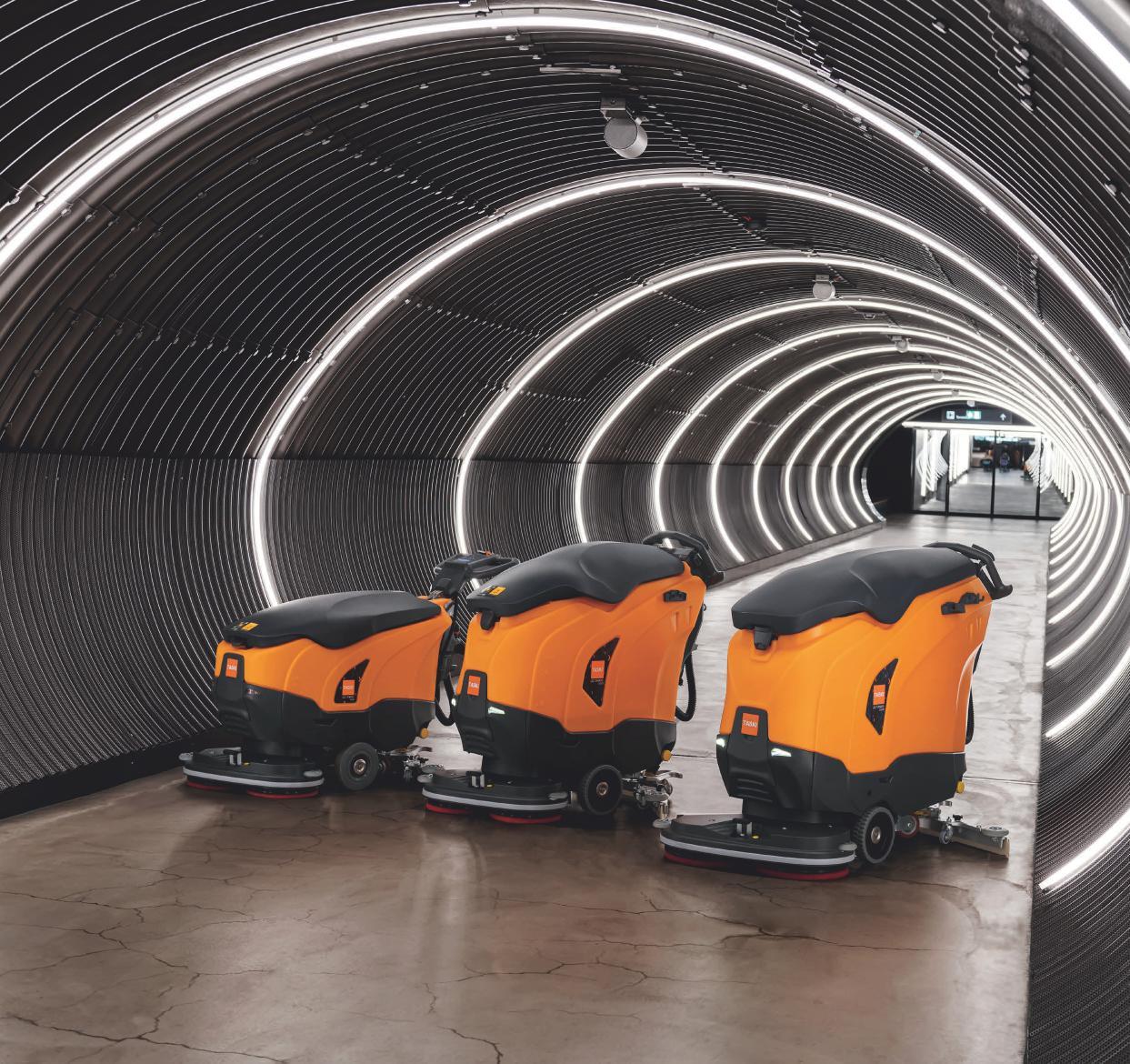





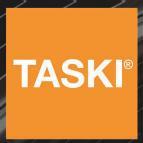




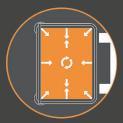




there were many who doubted that a pan-European magazine for the cleaning sector could even succeed.
The first edition of European Cleaning Journal (ECJ) was published in March 1993, just as trade barriers across Europe were coming down and the possibilities for business expansion and greater co-operation between the countries of Europe grew.
Founding editor Michelle Marshall is still the editor of ECJ today and she takes a look back at the stories that were featuring in that first edition.
My introduction in the launch edition of ECJ stated that one of our main aims was to encourage and act as a vehicle in enabling co-operation and exchange of knowledge and ideas between cleaning industry colleagues across the countries of Europe. Thirty years later, that key objective has not changed.
Looking back at the 1993 editions it’s clear to see how much the professional cleaning sector has evolved and grown. What’s also clear, however, is that many of the challenges then are still the challenges of today. In terms of technology, today’s smart solutions and robotic cleaning machines are a world away from 1993.
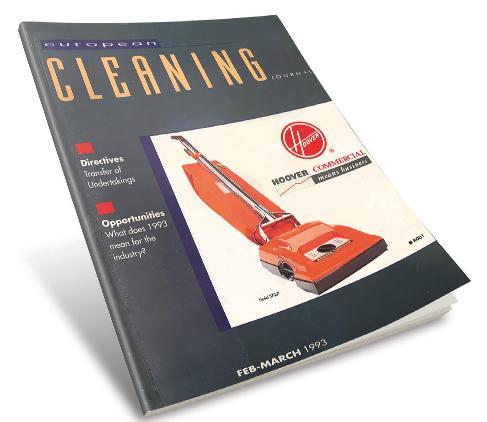
But the workforce issues, for example, remain the same and there is still much work to be done in ensuring our people are equipped with the skills they need to do their job, and that their professionalism and commitment are acknowledged, respected and rewarded.
My colleague Chris Godman – who I founded the magazine with all those years ago – and I would like to extend our thanks to those people and companies that have supported us since the very beginning. Believe it or not,
Our advertisers have remained loyal and we are so appreciative of that – a special mention must go to Comac in Italy, which has advertised in every single edition of ECJ over 30 years. Thank you for your continued support and endorsement.
So among the important news stories in that first edition, Electrolux in Sweden had just acquired sweepers and scrubbers manufacturer Pulimat in Italy; Dutch cleaning business Vebego had announced a record turnover of 600 million guilders (the Euro had
Europe at the time, 1992 had been a very difficult year for the industry – there had been a widespread recession. Contract cleaning companies had been forced to keep their prices low by clients, and in turn they had not been investing in new machinery and equipment. So times were challenging for the manufacturers too. However there was also a feeling of optimism with the opening up of the European market and the opportunities it was bringing.
I interviewed the chairman of the British Cleaning Council (BCC) in that first edition. Hazel Woodbridge was the first woman to chair the council and she had strong views about how
Europe, we must all co-operate.”
In 1988 the national contract cleaning associations from eight countries had in fact decided to join forces in order to represent the interests of the sector in the framework of the new European Union. The European Federation of Cleaning Industries was created. Since the launch of ECJ in 1993, I’m proud to say we have worked continuously with EFCI to promote the messages of the professional cleaning industry and raise awareness of its achievements.
Among the other content in the February/March 1993 edition of ECJ – the International Sanitary Supply Association (ISSA) of the USA had just established a European board for the first time. Olivier Richard at EFCI was telling us about the implications of the Transfer of Undertakings (TUPE) directive following a case pending before the EC Court of Justice involving ISS. And there were six new sets of European health and safety at work regulations.
There was an exclusive interview with Waldemar Schmidt, then managing director of ISS Europe. His key message – now that national trade barriers across Europe had been removed, the cleaning industry must strive for higher, more uniform standards of quality.
not been introduced yet!) and in Italy Giulio Guizzi had recently published a new book about cleaning, Della Pulizia Industriale.
The British Institute of Cleaning Science (BICSc) was offering a five-day study trip to the Netherlands as first prize in its bursary award; and the UK was looking forward to the British Cleaning & Support Services Exhibition (BCSSE) in Birmingham that June.
As highlighted by all of ECJ’s national correspondents around
people in the cleaning sector were perceived. “Cleaners are always seen as being at the bottom of the pile and are never appreciated,” she told me. “They often arrive to do their job after everyone has gone home and nobody even knows what they do and what an important role they play.”
A firm supporter of European unity, Woodbridge added: “The cleaning industry should speak with one voice – not just in the UK but on a Europe-wide basis. If we are to be a truly united
Also speaking exclusively to ECJ was Tony Dahlmann, who was retiring as managing director of Nilfisk UK. His parting comment was: “The industry does have room for growth but it needs to offer higher productivity which in turn leads to more profit, followed by higher wages and better training.”
It has always been a pleasure and a privilege to be involved in this industry, and to get to know so many of the dedicated people who work within it. So here’s to the next 30 years!
European Cleaning Journal compie 30 anni, il primo numero uscì nel 1993. Facciamo una restrospettiva su quello che succedeva nel settore del cleaning in Europa quando venne pubblicato il primissimo numero.
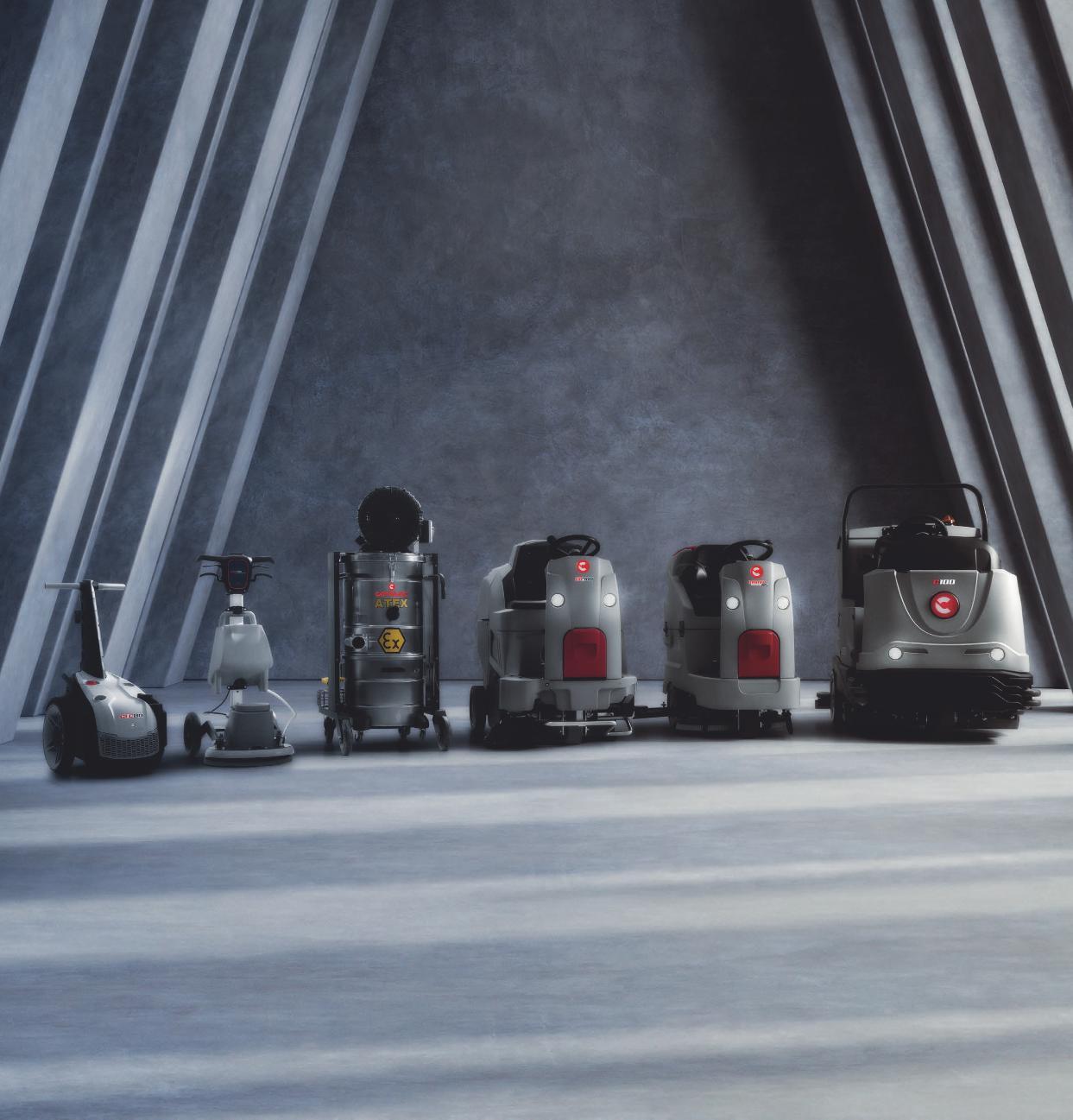






social partners cover horizontal topics that are common to all economic sectors; and the sectoral one.
Since the construction of the Maastricht Treaty, social dialogue has been identified as one of the features on which the European social model is built. Matteo Matarazzo, director general at EFCI, explains its role and how it functions in the cleaning sector.
When it comes to decisionmaking in the European Union, next to the traditional legislative procedures in which the European Council and the Parliament work together, an alternative exists in the field of social policy. It is social dialogue, in which social partners – ie, the organisations representing the two sides of the industry (the business community and the workforce) are free to interact, discussing issues that are relevant for the sector and elaborating together common solutions, whose legal value is officially accepted.
The value of this dialogue, and its institutional recognition, is based precisely on the acknowledgment that the players on the field are in a better position than policymakers to understand the challenges and needs of their sector, and identify the most effective solutions to address them – including legislation.
Since the beginning of the construction of the Maastricht Treaty, social dialogue has been identified as one of the features on which the European social model is built. Currently, two different levels of social dialogue are mentioned in the Treaties: a cross-sectoral one, in which
The actual representativeness of these organisations (which is a precondition for their dialogue to be recognised) is assessed regularly by a EU agency, Eurofound. Their implication takes two main forms: a compulsory consultation by the European Commission, whenever it considers the adoption of legislation in the social policy field; and the capacity to enter negotiations on topics of common interests, in full autonomy. Whether it comes as a consequence of the consultation process or
industry. Together with its trade union counterpart, UNI Europa, it has agreed on several positions and joint statements and accomplished joint European projects, raising awareness on the challenges of the sector and elaborating policy proposals relevant for its actors.

An example of EFCI’s work in social dialogue: agreeing on the need to review public procurement rules.
In a joint statement signed in March, EFCI and UNI Europa have stressed the importance of sound public procurement provisions, shifting away from an approach based on the reference to the lowest
price as the overarching criterion for attributing public tenders. For a sector that has a strong influence on public health and is regarded as essential for the collective wellbeing and the good functioning of our societies, allowing both employers and workers to operate
capacity. In conclusion, both social partners call on the European Commission to consider intervening on some shortcomings of current provisions on public procurement, for instance by prohibiting clauses that forbid price revision of awarded contracts (especially because of structural phenomena like high inflation) or restricting participation in tenders to actors involved in collective bargaining.
Lorenzo Mattioli, president of EFCI, commented: “In some EU countries, public procurement accounts for approximately 50 per cent of the turnover. And as the percentage of the provision of services increases over the provision of goods or the realisation of public works in the context of public procurement, there is a need to rapidly review the approach of public authorities to how they tender.
following their autonomous decision, the ensuing negotiation can result in different outcomes, ranging from the signature of joint declarations or statements to the conclusion of legally binding agreements (that, if parties require it, can be finalised into EU directives). In both cases, the European Commission acts as a facilitator of the process, providing organisational support and institutional backing.
EFCI’s predecessor, FENI, has been recognised since the very beginning of ‘structural’ sectoral social dialogue in 1998, as the legitimate European association representing the cleaning
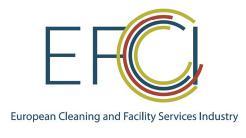
Depuis l’établissement du traité de Maastricht, le dialogue social est considéré comme l’un des fondements du modèle social européen. Matteo Matarazzo, de l’EFCI, explique le rôle de ce modèle et son application au secteur de la propreté.
in the best structural conditions is fundamental. And as public authorities are a very large client for the professional cleaning industry in Europe, the contractawarding conditions that are set in this context have a significant impact on the possibility to continue providing quality services. Guaranteeing high social and working standards for workers while safeguarding the financial viability of businesses and the durability of the sector.
Public procurement can play a major role in strengthening the reach of collective bargaining in the sector, supporting the representative social partners reinforces their institutional
Seit der Ausarbeitung des Vertrags von Maastricht wurde der soziale Dialog als eines der Merkmale identifiziert, auf dem das Europäisches Sozialmodell aufbaut. Matteo Matarazzo (EFCI) erläutert seine Rolle und welche Funktion er in der Reinigungsbranche erfüllt.
“In times of high inflation like these, for many employers it has become simply impossible to keep up with the cost increases they are subject to. As responsible employers, we need to be put in the right conditions to continue delivering quality for our end-users and offering the best conditions to our staff while keeping our activities profitable – something a system based on the supremacy of the lowest-price criterion cannot allow sustainably”.
Oliver Roethig, regional secretary of UNI Europa,added: “Cleaners have seen their working conditions degraded over the years. Instead of addressing the problem, public money has been fuelling it. By putting price above all other considerations, they are squeezing both workers and employers. Public procurement should elevate collective bargaining as a motor for decent conditions and fair competition.”
www.efci.eu
Sin dal Trattato di Maastricht, il dialogo sociale è stato identificato come una delle caratteristiche su cui si fonda il modello sociale europeo. Matteo Matarazzo di EFCI spiega il suo ruolo e come funziona nel settore del cleaning.


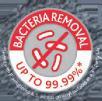















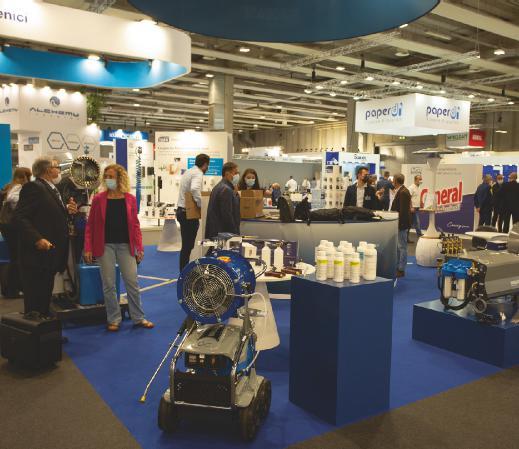
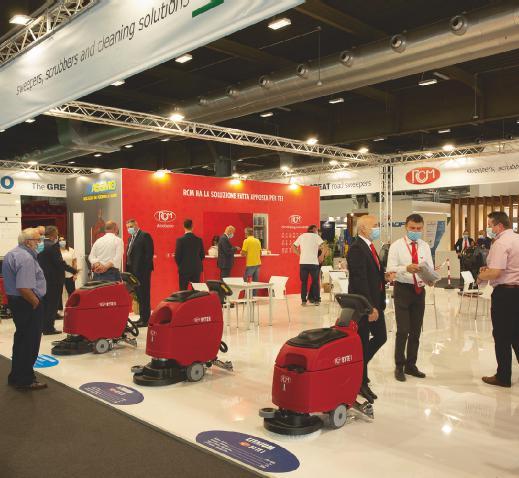
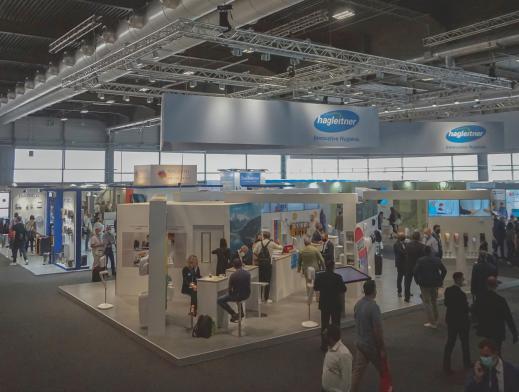
ECJ looks ahead to the Italian cleaning exhibition ISSA Pulire, which takes place from May 9-11 in Milan.
The 2023 edition of ISSA Pulire, the exhibition for the Italian cleaning market, marks a new beginning for the event. Because this year it moves to Milan, after many years in the city of Verona. The new venue is Fiera Milano, Rho and it will be held there from May 9-11.
This year sees the introduction of a brand new area, the Disinfestando Pavilion, dedicated to the pest management sector. This is thanks to an agreement with Sinergitech, organiser of events and courses for the pest management and pest control sectors. Also co-located is the B2B exhibition for the agri-food ecosystem, TUTTOFOOD.
Among the special events taking place during the exhibition will be the announcement of the Product of the Year ISSA Pulire 2023 Award. All exhibitors were eligible to submit entries, with the winner being announced on the first day.
The finalists are: Arcora International, Bottoni, C-A-L Italia, Copyr, Disitek, Envu, Essity, Hagleitner, Idrobase, Industrie Celtex,
Limtrade, LionsBot, Makita, Nilfisk, Sofidel, Soligena, Sutter, Unger, Vileda Professional and Werner & Mertz.
Also taking place is the Hackathon – derived from the words ‘hacker’ and ‘marathon’ – whereby teams compete to find a solution to a given problem. In this first edition, the task revolves around the theme Smart Facility: Cleaning Connected to the Future.
The cleaning sector is undergoing transformation and digitisation that not only helps service providers improve the health and safety of buildings, but also makes them the point of reference for implementing and achieving the building owner’s Environmental, Social, Governance (ESG) objectives. The teams will compete to demonstrate how cleaners, trained and equipped with digital tools, can contribute to achieving ESG objectives and bringing objectively measurable results.
University students from the IT, economics, engineering, management, environmental and design fields have been applying to take part. The team judged to be the winner by the
Le salon italien de la propreté, l’ISSA Pulire, aura lieu du 9 au 11 mai à Milan, où il a déménagé après s’être tenu de nombreuses années à Vérone. ECJ prévisualise ce que vous pouvez y voir.
international jury will receive a prize of €3,000, with the runnerup receiving €1,000.
Taking place alongside the exhibition will be a conference programme for visitors. Among the themes will be: The Value of Education and How to Retain Cleaning Professionals; Cleaning for Purpose, Not Just Appearance; Digitalisation and the Cleaning Industry in Europe; The State of Health of
Die italienische Reinigungsmesse ISSA Pulire findet vom 9.–11. Mai statt. In diesem Jahr zieht sie nach Mailand um, nachdem sie viele Jahre in Verona veranstaltet wurde. Das ECJ wirft einen Blick voraus auf das, was es zu sehen gibt.
Cleaning Companies in Italy; ISSA Key Elements of Cleaning Audits; What’s Needed for a Professional Rental Service; The New Code and Climate Strategy in Italy; Quo Vadis, Where the Industry is Heading; Facility Management and Sustainable Development Goals; The Voice of Women in the Cleaning Industry.
For more information on visiting go to: www.issapulire.com
La fiera italiana del cleaning ISSA Pulire si terrà dal 9 all’11 maggio e quest’anno si sposta a Milano, dopo essersi tenuta per molti anni a Verona. ECJ fa una panoramica su quello che ci sarà da vedere.

“I have this song in my head, ‘When I’m Cleaning Windows’ (1936 song by George Formby)…,” Estrid Dyekjær bursts out enthusiastically when I first get her on the phone.
“And it makes me so happy whenever cleaners are being acclaimed, instead of being portrayed as in ‘A Touch of Frost’ for instance where the cleaner kills a patient when pulling the plug to the respirator while hoovering at a hospital.”


So, there was no doubt in the now 43-year-old author’s mind that a cleaner should play a more positive part in her works. While the cleaner is the ‘heroine’, although not a lucky one, the way tenders are being made by ‘the suits’ far from the people they affect the most is, if not the ‘villain’, then gets a severe slap on the wrist.
The criticism voiced in her novels is triggered by her own experiences. For years, Dyekjær herself worked in the industry and saw how corners and prices were constantly cut in tenders, leaving cleaners with unrealistic quality demands and stopwatches attached to their behinds, as she puts it.
“I met so many amazing people in this business who felt washed-out and were deeply distressed. I saw supervisors crying because they had to put more pressure on their cleaners who were already running 750 square metres an hour. And none of them could allow themselves to quit their jobs – even when unable to cope,” she says.
While working for a large FM service company, Dyekjær felt compelled to write a letter to the editor with her honest opinion about the system. A system she compares to “a tooth rotten to the core.” Before sending it, she showed it to her manager who
was inclined to agree with her but warned her it would be the end of her career in the industry if she went ahead.
So, she didn’t. Dyekjær stayed in her job, wrote two other novels before she made her move, quit her job and was ready to publish her criticism –and even the letter to the editor in almost the exact same words – wrapped up in feel-good fiction, a trilogy.
The main character of the trilogy finds herself, not unlike Dyekjær, fed up with her job submitting tenders at the fictional company TBCC, short for The Big Cleaning Company.
”The first word I wrote in the novel was the F word because that was the feeling I had myself just before I left. It felt so unpleasant to be a part of it all, leaving my children in childcare at 6.30 in the morning to go to work and make decisions that basically ruined other people,” Dyekjær explains.
Having a cleaner as the main character wasn’t a great idea, she was told, so instead her main character crosses paths with a cleaner. An immigrant worker, who – spoiler alert – is laid off as a result of a take-over bid made by TBCC. The cleaner is already worn-out, ends on early retirement benefits, is basically sent to the dogs and finally dies! In short! A terrible story of course - but not unrealistic - and in fact the storyline that moved most of the readers who sent her feedback.
Dyekjær concludes: “I have so many more words in me, and several stories lined up in my head. And even though my local librarian thinks I should pack up the cleaning bit, I’m not done with that. There’s a lot more to be said and I haven’t had any negative reactions so far.”


VSR director John Griep tells us about a new measurement tool that focuses on perception.


VSR and industry organisation
Schoonmakend Nederland have commissioned the development of a new measurement tool. This instrument measures the perception of cleanliness by premises users. This is somewhat different from cleaning quality, which is already measured with VSR-KMS. Why does VSR consider cleanliness so important that we create measurement tools for it?

For nearly 30 years, VSR-KMS has been the measurement instrument for technical cleaning quality in the Netherlands. It was, and continues to be, a huge asset because it is unambiguous, reliable and objective. This is essential in the food industry, healthcare and in laboratories.
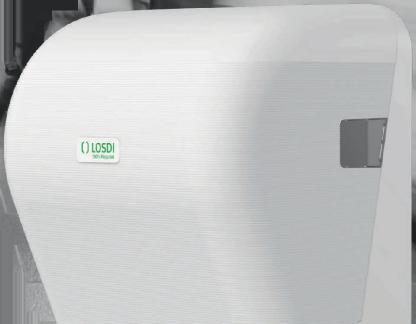
The flip-side of the coin for offices and schools, among others, is that VSR-KMS measures only the minimum acceptable level of cleanliness (making that the standard). It measures whether a cleaning company adheres to contract agreements.
We feel this is no longer sufficient. Society has changed. The experience economy is dominant and society is more critical. Even when it comes to products, consumers choose not only functionality but also the experience when they buy, receive, unwrap or use the item(s). The consumer and the user are the focus today. And, in view of this, you might well ask: how does it benefit the property user to know that the cleaning company has kept to the contract agreements and achieved the minimum acceptable level of cleanliness?
This social development prompted VSR and Schoonmakend Nederland to commission the development of a measurement instrument to measure the perception of cleanliness. We asked Dr Herman Kok to work on it. He is involved with Wageningen University & Research (WUR) and is an expert in facility manage-


ment. Kok is currently working on an independent measurement tool that will be similar in structure to VSR-KMS, with a standardised questionnaire, analysis method and dashboard. It will be ready after the summer.
A major difference from VSR-KMS is that this tool focuses on the holistic cleanliness experience of users. This means people perceive their environment as a whole. Individual characteristics such as interior, colour, smell and light lead to a cohesive image. So it is a combination of stimuli that affects the cleanliness experience and the impression a property has on a user.
This means the assessment of the cleaning experience is partly beyond the control of the cleaning company. Improving the cleanliness experience goes beyond a simple focus on capacity. It involves understanding the spatial characteristics in a property and interventions that affect those characteristics (and thus the cleanliness experience).

As a cleaning entrepreneur, what do you actually gain from this? After all, your influence on this perception is limited. Perhaps the biggest change is in your relationship with your client. A shift is needed: from a risk-averse client, who commissions an economically driven performer, to a cooperative relationship between client and cleaning contractor. A relationship based on mutual trust, in which the property user is given an important role.
After all, cleanliness is scientifically proven to contribute to health, well-being, loyalty, satisfaction, productivity, a sense of safety, pro-social behaviour, reputation and study success. Even without a measurement tool, these insights offer plenty of reasons for you, the cleaning expert, to engage with your client about the effect of cleanliness perception on the core process.
Reporting from Italy on the growth of dry-ice blasting in industrial applications is Anna Garbagna.
Among the most recent and innovative technologies that are gaining ground in Italy, together with robot cleaning and ultrasound cleaning, there is also cryogenic cleaning (dryice blasting) which allows the removal of dirt from manufacturing facilities while reducing the need to dismantle the machines themselves.
Thanks to the high speed with which the dry ice granules (solid carbon dioxide at a temperature of -78.5°C) are launched with compressed air, the surface being treated is automatically hit and flawlessly cleaned. The principle is similar to sandblasting but with a major difference: impacting on the surface, dry ice returns to a gaseous state in the atmosphere like the CO2 already naturally present at one per cent in our atmosphere.
However it is good to remember that, with this method, dirt is only moved and it must be disposed of, unlike in mechanical cleaning actions when the dirt is completely removed.
Consequently, the objective of this type of cleaning is absolutely fundamental in the case of machinery where the surfaces are difficult to reach and, because the granules are extremely small, they allow a higher number of surface impacts and often with better performance.
It is understood that, once this operation is completed, it will be necessary to remove the dirt by sweeping the contaminant if dry, or cleaning with a water jet if wet or greasy.
In addition, in order to get it removed, the dirt which is not normally visible and cannot be heard when it detaches from the
surfaces, is hit with force and for this reason it is always necessary to wear eye protection. Similarly it is always advisable to perform this kind of cleaning in a place, although enclosed, that has suitable ventilation since CO2 is heavier than air. If the procedure is performed outdoors, however, existing ventilation is sufficient to avoid accumulation of CO2.
It is not a coincidence that dry-ice blasting cleaning systems have rapidly become the favourite cleaning method in the industrial and environmental sectors, because they eliminate disassembly and cooling down time. In fact this method enables production downtime to be minimal.
From machinery in the most complex facilities to rubber and plastic moulds; from food processing industries to automotive industries; nuclear industries and others with increasing complexity. Work areas and machinery can be cleaned with outstanding results as well as reduced costs - this would not be attainable with the more conventional cleaning methods on the market.
It must not be underestimated that it is a non abrasive system if it is correctly applied, and can therefore be suitable for extremely delicate cleaning situations such as dirt removal from electronic circuit boards and electric parts, or for cleaning and sanitising of, for example, assembly lines or conveyor belts.
Lastly, it should be noted that resistance values at low insulation, if attributed only to contamination, considerably improve after cleaning with dry-ice blasting is completed.
In ihrem Bericht aus Italien betrachtet Anna Garbagna den zunehmenden Einsatz von Trockeneisstrahlen in industriellen Anwendungen genauer.
The traditional approaches to cleaning specifications have long been either an input style or outcome led service models, along with some hybrids of the two. The need to develop alternative means of capturing the operational details are changing.
Service providers are seeking that extra value opportunity for clients. This includes keeping a competitive edge with the use of smart and digital technology, an approach that is fast becoming synonymous with the concept of ‘dynamic cleaning’ - a decisive move away from more conventional cleaning service delivery.
Dynamic cleaning is about finding ways to work smarter and not necessarily harder. It is a data driven perspective with the application of technology enhancing systems and processes that meet the demands of the next generation. It is evolving so fast that what only recently existed in research is out there in the here and now. This technology requires appropriate use and applications, with understanding of the value of the data produced, what it does, and what it means. Some question its benefit. Are the fancy dashboards actually providing value? Is the data meaningful? This includes a wide variety of digital intel. From the deployment of management software to the embracing of a globally accessible network of Internet of Things (IoT) and a plethora of mobile applications the whole approach to cleaning has shifted. Are we all being sucked into this because everyone else appears to be? Or are the answers, the solutions to so many of the issues faced being resolved through the application of data? Is it being used to better guide our businesses of
the future? Utilising smart solutions - through the introduction of facility management apps; occupancy and space planning tools; platforms leveraging AI technology with sensors that provide smart solutions for efficient, healthy sustainable buildings, producing real time data. These can make the operational side of the business far more efficient and support business growth with the best possible results, demonstrating clearly outstanding outcomes.
When considering the speed of movement towards this data led approach in the cleaning and facilities sector it is still important to consider if this is overcomplicating the process. Are we sinking under this abundance of data and is it making a real difference? Certainly the compliance demonstrated by collection of suitable evidence, data from telemetry and measurements for proof of compliance provides some key benefits for both the service provider and their client.
With the well-publicised struggle to recruit in the labour market the application and appropriate use of technology has some valuable benefits. It will not replace the emotional input of human touch nor will it provide that face-to-face connection but the integration of technology generates certain successes in this challenging collaboration between them.
The capture of data and use of smarter solutions are certainly embraced by the younger generations. We must all tune in to their acceptance of all aspects of IoT, embracing the value of innovation, not resisting it. The data analysis, the technology is here to stay; the challenge is not to sink but to learn to swim with the tide.
Dall’Italia, la corrispondente Anna Garbagna esamina da vicino l’uso sempre maggiore della pulizia criogenica (dryice blasting) nelle applicazioni industriali.
Devant l’exploitation accrue de données dans la gestion des services de nettoyage, Lynn Webster au RoyaumeUni se demande si le processus n’est pas devenu trop compliqué.
Reinigungsdienste werden mit einem zunehmend datengestützten Ansatz ausgeführt, und Lynn Webster im Vereinigte Königreich fragt, ob das Verfahren übermäßig kompliziert ist.
Mentre vediamo un approccio ai servizi di pulizia sempre più basato sui dati, nel Regno Unito, la corrispondente Lynn Webster pone la questione se questo processo non sia troppo complicato.


The French association FEP is unhappy about the value of public contracts, reports Christian Bouzols.
For some time now, the French cleaning federation (FEP) has been complaining to the public procurement authorities that they haven’t kept their promises to increase the value of their cleaning contracts. In the context of the government’s intention to re-visit the issue of wage increases in the aftermath of the pension reform act - which is still causing social disturbances in France - leaders of the federation used the opening of the Europropre show in Paris in April to remind the authorities that they had failed to honour the commitments they had made at a conference 18 months ago.
The authorities involved are all the public bodies that outsource cleaning services. The stakes are therefore quite considerable.




In September 2021, the social partners of the cleaning sector met with representatives of both public authorities and of private sector clients at a ‘progress conference’ sponsored by the labour ministry, then headed by Elisabeth Borne, who has since become prime minister. The purpose of that meeting was to discuss ways to increase the income of cleaners and the appreciation of their work at a time when it was expected that there would soon be an end to the Covid pandemic. During which cleaners had proved to play an essential role during successive lockdowns.
At that conference there was much talk of putting an end to low cost procurement practices by buyers engaged in highly competitive tendering processes, all this to the detriment of the wages and working conditions of cleaners. During the meeting, cleaning sector employers
En France, la Fédération des entreprises de propreté se plaint de ce que les pouvoirs publics n’ont pas tenu leurs engagements à relever le montant des marchés.
Christian Bouzols en dit plus.
committed themselves to increasing the wages of their cleaners, while the purchasers of cleaning services promised that they would carry out equivalent increases in the value of their procurement contracts. Unfortunately, they have hardly moved towards keeping their promises in the ensuing 18 months.

Wages have increased, but not the value of contracts
“I’m most disappointed at the poor outcome of this progress conference. On our side, we’ve increased our wages, but on the other side the monetary value of public cleaning contracts has been constantly reduced, and this has been made worse by the inclusion of ever increasing requirements in contractual specifications,” lamented Philippe Jouanny, president of the FEP.
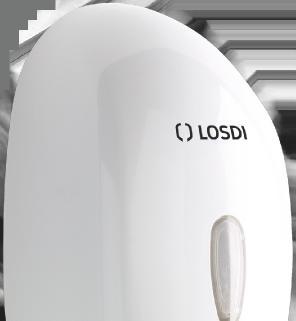
In the latest round of negotiations, it was planned to increase wages by 11 per cent in two yearly increases of 5.5 per cent, ending in 2023. But during that time, inflation has caused a rise of 16 per cent in the cost of products and equipment, “a situation which is difficult to keep up with bearing in mind that the average profit margins in the sector are about three per cent”, explained Jouanny.

The opening of the Europropre show in Paris has allowed the players in the cleaning sector to return to the issue in the hope that the media attention generated by the event will help them in their cause and prompt the buyers to move towards meeting their demands. Indeed, despite their promises, the buyers of cleaning services have hardly budged since the pandemic.
Der französische Verband für Vertragsreinigungsunternehmen

FEP ist unzufrieden mit Behörden, die für die öffentliche Auftragsvergabe verantwortlich sind, da sie das Versprechen, den Wert von Reinigungsverträgen zu erhöhen, nicht gehalten haben. Christian Bouzols berichtet darüber.
La federazione francese delle pulizie in appalto FEP non è soddisfatta delle autorità preposte agli appalti pubblici in quanto non hanno mantenuto la promessa di aumentare il valore dei contratti di pulizia. Ce ne parla Christian Bouzols




Twice a year the BIV council meets to discuss policy questions relevant to the work of the association in order to establish a balanced view between the leadership and its member associations. In March the council met in the French town of Strasbourg and devoted two days to relevant political indicators and crossborder policy cooperation.
“Even if much of what comes from Brussels is not to our liking - especially the mass of red tape - as businessmen and as an association we are ardent Europeans”, said BIV federal guild master Thomas Dietrich. “Cross-border exchange is of key importance for
our international sector.”

On the first day, council members took part in a debate at the European Parliament plenary session. First of the leading politicians to address the group was Nicola Beer (Renew Europe Group), vice president of the European Parliament and deputy chair of the Liberals, who provided answers to questions a variety of subjects such as bureaucracy, regulation mania and the slow pace of legislation. Nicola Beer sketched out a political vision for the EU in the coming years: the top priority for her would be to strengthen the location and the competitiveness of the EU,
including the internal market, digitalisation, free trade, external and security architecture and the energy market.
Marion Walsmann (European People’s Party), vice chair of the CDU/CSU Group in the European Parliament, criticised excessive demands on the middle classes who in her view represent the bedrock of prosperity. She wants to reduce red tape and regain a clear focus on performance and competition. Social democracy was represented by Gabriele Bischoff, an MEP from Berlin and vice chair of the Progressive Alliance of Socialists and Democrats in the European Parliament. Her key task is the coordination of social security systems. This involves fairness, harmonisation, comparability and digitalisation across the EU. Her goal is to introduce digital technology for data
exchange in all member states.
In a debate on day two Thomas Dietrich raised key topics such as inflation, Ukraine, wage bargaining policy, cleaning in local authorities and towns, and working time recording. He said he was worried about an emerging wage-price spiral in view of, on the one hand, an increasingly heated political debate on the minimum wage and on the other, the sometimes exorbitant demands made by the unions for sector wage increases of 20 or 25 per cent. “Overall however,” he concluded, “the contract cleaning business is in a reasonable position, in spite of ‘mini job’ reforms at the employers’ expense, in spite of labour shortages and in spite of occasionally difficult discussions with clients as a result of significant wage increases introduced in October 2022.”

The gala dinner and awards ceremony takes place in The Round Room at The Mansion House in Dublin:
The perfect networking opportunity for you and your team -VIPs, top business owners and key decision makers will be there
Be inspired - spend a fun evening celebrating the success of our industry
A night full of entertainment and music, with dancing until 2am in one of Europe's liveliest cities
We would love you to join us. Visit www.echawards.com/attend to find out more
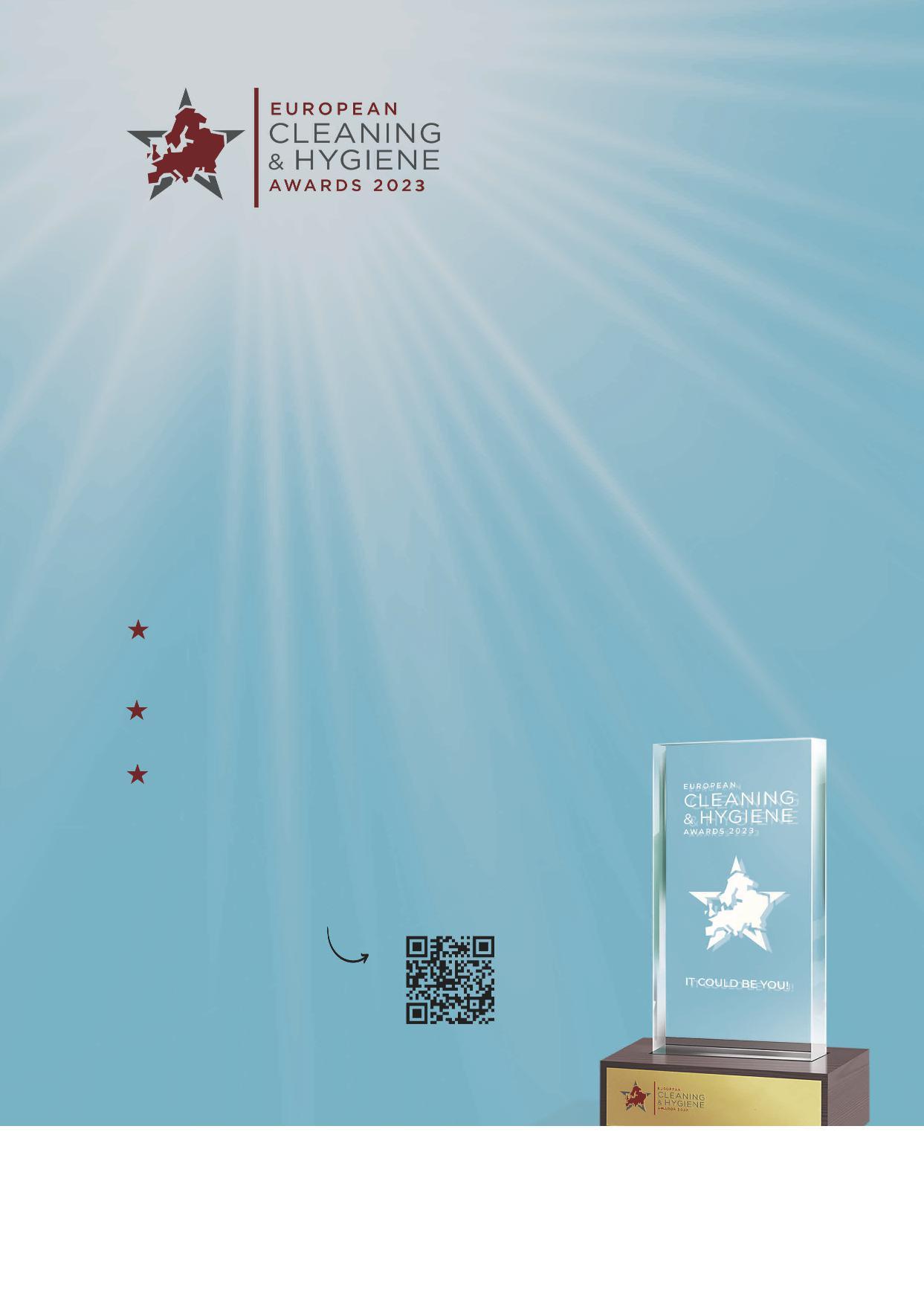
Or scan this QR code

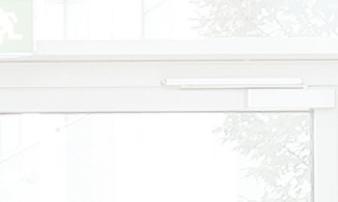

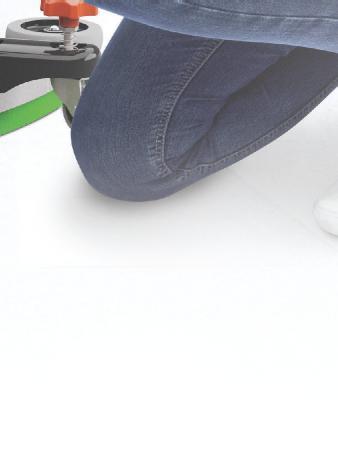

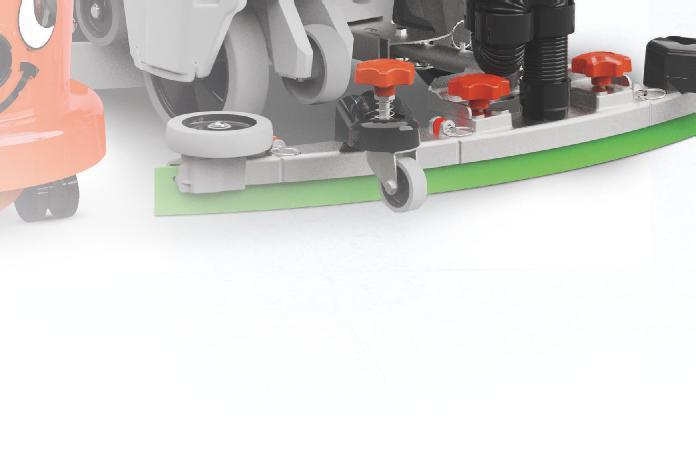


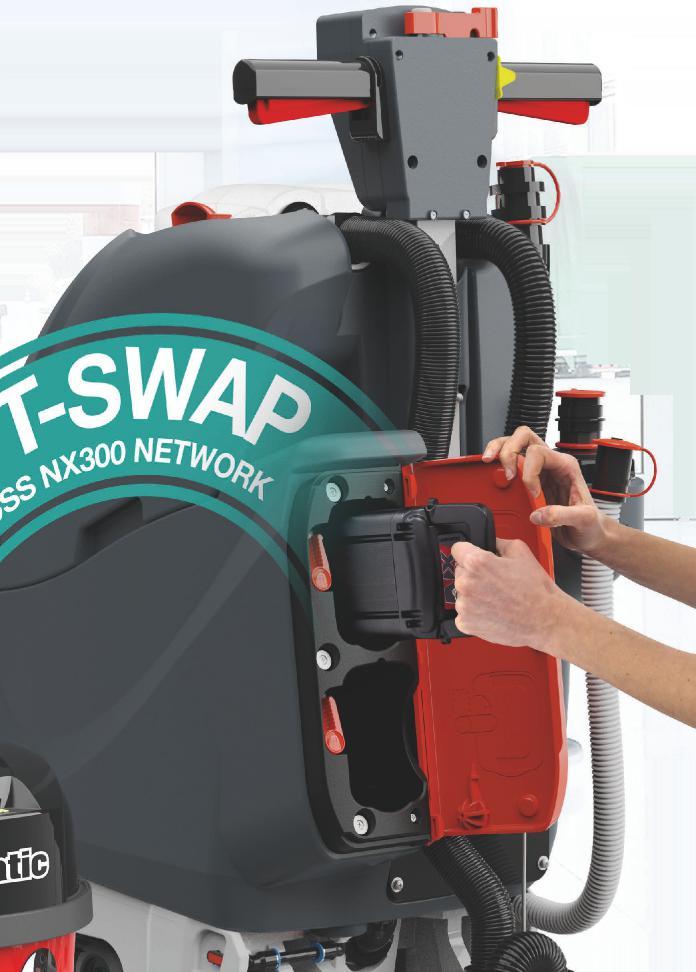
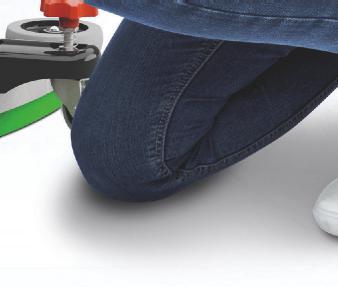
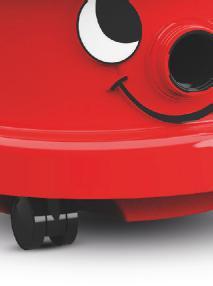




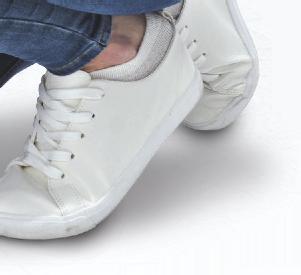
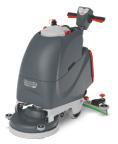

























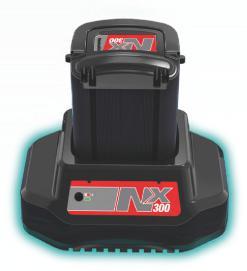






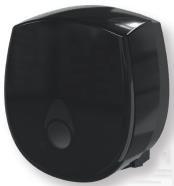







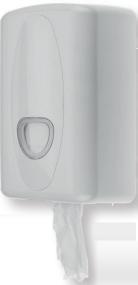



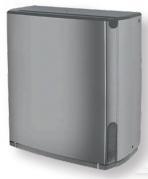
WASHROOMS COME IN all shapes and sizes. Some are purely functional and only offer the bare essentials - namely soap, toilet paper and hand-drying facilities. Others go the extra mile to impress visitors and will perhaps feature plush surroundings, hand creams and an attractive background for selfies.
But what do visitors actually want from a washroom? Is a safe and hygienic environment more important than aesthetics? And do factors such as efficiency and sustainability matter much to the typical end-user?
The global pandemic has put a firm focus on hygiene, says Northwood Hygiene’s marketing manager Paul Mulready. “People are washing their hands more frequently as they learn to live with Covid-19 and they expect washrooms to be clean, hygienic spaces that inspire them with confidence,” he said.
“There is also a growing appreciation of touchless fixtures because these come with the reassurance that the toilet paper and hand towels they use has been untouched by anyone else.”
Northwood’s touch-free Hybrid Roll Towel dispenser presents towels in a single-sheet format to help reduce the spread of germs, according to Mulready.
Washrooms are part of the visitor experience in a luxury establishment, he says. “Guests here will want to see stylish fixtures plus premium products such as quality soaps and scented hand creams,” he said. “Premier venues would also expect to be tagged on Instagram or Facebook and would want any comments about their washrooms to reflect positively on them. So these must be of a high standard.”
A washroom visited daily as part of the user’s routine would invoke different expectations, he adds. “Workplace toilets still need to be clean, hygienic and well stocked, but people are not going to linger for long in these settings,” said Mulready. “So all dispensers and consumables should help to make the experience quick
and efficient for the visitor.”
Washrooms are often the first or last place port of call in any establishment, he says. “It can be immensely frustrating to find there is no toilet paper, soap or hand towels and a negative experience could leave a lasting impression on the visitor,” he said.
High-capacity units will ensure a longlasting supply and reduce the risk of frustrating run-outs, he says. “This will also cut down on the number of service visits required by operatives to re-stock.”
Customers are becoming increasingly interested in the issue of sustainability, according to Mulready. “Washrooms come under close scrutiny because they make heavy use of consumables such as paper towels and toilet rolls,” he said. “We all prefer to use ethical products and minimise waste, so visitors should be provided with sustainable products and energysaving solutions. These will reassure them that the company is doing its best to be responsible.”
Most people want the process of using the washroom to be hygienic, fast and efficient, says Losdi’s marketing and communications manager Pau Ortiz. “Washroom visitors simply want to get on with what they were doing beforehand as quickly as possible,” he said.
“This means all dispensers should be designed to work efficiently. But washrooms should also be sustainably managed.” Losdi offers a range of washroom dispensers and hand dryers and has recently redesigned its product packaging to make it more eco-friendly.
People’s washrooms requirements depend on the type of facility concerned, says Essity’s communications director Jenny Turner. “Hospitality washrooms should reflect the venue’s brand values and match the customer’s expectations,” she said. “However in other environments, factors such as cleanliness, good soap and paper provision and quick access with no queueing will take priority over
ECJ finds out what people expect to find in their washrooms - and whether or not this is actually being delivered.
plush surroundings.”
Offering basic hygiene products should be a minimum requirement in every washroom, she says. “This has become even more important since Covid,” says Turner. “And improving sustainability has become essential in our everyday lives and is increasingly top of mind.”
Essity offers a paper hand towel recycling service to help companies reduce their carbon footprint. Customers signing up for Tork PaperCircle have their used washroom hand towels picked up from their premises and taken to local Essity mills where they are turned into new tissue products.
It can be a challenge to operate a washroom proactively rather than reactively, according to Turner. “Running out of soap, bad smells and paper towels on the floor are all common complaints,” she said. “But the biggest complaints of all relate to the toilet paper running out.”
She says smarter ways of working can help to address these issues. “High-capacity solutions and data-driven cleaning can increase efficiency, save time and improve the working environment for cleaning staff,”” she said. Essity’s Tork Vision Cleaning, which uses sensors to allow cleaning staff to check on refill levels remotely, is claimed to ensure soap and paper dispensers remain stocked 99 per cent of the time.
Kimberly Clark Professional’s UK general manager Craig Bowman agrees with other commentators that hygiene, safety and health are top priorities for most washroom users.
Continued page 26

Living up to expectation? (continued from page 25)
“They also want soaps and sanitisers that leave their hands feeling clean without drying them out,” he said. “And they like facilities that allow for quick and effective hand drying.”
End-users value reliability and want to see systems that prevent run-outs, he said. Kimberly-Clark’s new Scott Essential Rolled Hand Towel is 380 metres in length which means it is particularly long-lasting, he claims.
Comfort, fresh-smelling air and peace and quiet are also important to many washroom users, according to Bowman. “And while hygiene and safety are top priorities, sustainability is of equal importance for many,” he adds.
Kimberly-Clark’s RightCycle system offers a closed loop recycling service for hand towels and also allows customers to recycle their dispensers. The plastic, cardboard and metal screws in the units are extracted and used to make new products such as car parts and children’s toys.
Around 40 per cent of people are concerned about pressing physical buttons on a hand dryer according to lead scientist at Dyson for Business Dr Salome Giao.
“Our research also shows that 24 per cent of people believe they could be drying their hands with unclean air,” she said. “Many older warm air dryer models cause hygiene and environmental concerns among users. For example, people might be concerned they could be consuming high amounts of energy and contributing
to a business’ carbon footprint.”
Dyson hand dryers have a touch-free design and HEPA filters to alleviate such concerns, she says. They are also claimed to use a sixth of the energy of conventional dryers.

“With our Dyson Airblade we place hand hygiene, the reduction of CO2 emissions and cost efficiency at the forefront of design,” said Giao.
Most people simply want away-fromhome washrooms that are well-stocked, fresh-smelling and clean, says P-Wave’s sales and marketing manager Mark Wintle. “First impressions count and if a washroom doesn’t smell pleasant, customers will assume it isn’t clean,” he said.
Some venues will choose to enhance the experience for customers but cleanliness and hygiene should remain the top priorities, he added.
“Washrooms need to be functional above all else – and it is the things you don’t see that can matter most,” said Wintle. “Operators need to concentrate on the basics rather than worrying about fancy backdrops because nobody appreciates it when there’s no toilet roll, the soap dispenser is empty or when the washroom obviously hasn’t been cleaned properly.”
Queues are another bugbear for washroom visitors, he says. “Minimising queuing will always be a challenge and lines tend to form when dryers are out
of action or when there is an insufficient number of clean and working cubicles,” he said. “But reducing queues for the gents’ can be as simple as using efficient urinal screens to avoid them becoming blocked.” P-Wave offers odour-eliminating urinal screens plus a range of passive and active air fresheners.
Hygiene and cleanliness are most people’s top priority in any washroom, says Brightwell’s marketing executive Nikoleta Hornackova. “It is also important the facility presents a positive experience that unmistakably reflects your brand,” she says.
“Washroom systems should be designed to suit each brand’s requirements. The luxurious ambience of a restaurant, the practicality of a motorway service station or the fresh feel of a contemporary office should continue effortlessly into the washroom.”
The Brightwell range includes bespoke options allowing customers to personalise their dispensers with colours, logos and shapes to suit their brand.
Sustainability is a key issue for many of today’s customers, according to Hornackova. “Demand for sustainable, efficient and durable products will continue to grow as the world focuses on tackling climate change and reaching net zero emissions,” she said. “And people are becoming more interested in how washroom products are manufactured.” The housings of Brightwell’s Myriad Recycled Dispenser Range are made from 100 per cent recycled plastic.
End-user expectations have changed since the global pandemic, says GOJO’s UK and Ireland managing director Chris Wakefield. “Cleanliness has always been important, but feeling safe about the hygiene of public spaces is now front of mind,” he said. “People want to see impeccably clean and hygienic facilities to reassure them that businesses are taking their health and safety seriously.”
The level of opulence required will depend on the environment concerned, he says. “Function trumps fancy backgrounds in hospitals, for example, but there is merit in creating a more luxurious experience in upmarket hotels and restaurants,” said Wakefield. “The rise of social media and the ‘#bathroomselfie’ can bring commercial benefits.”
Every away-from-home washroom should provide a positive user experience whatever its location, he adds. “This means ensuring all equipment is in good
Continued page 28
Femcare™ SIMPLE. The 23L unit ensures sanitary waste is disposed of hygienically, safely and responsibly, in an altogether more efficient way.
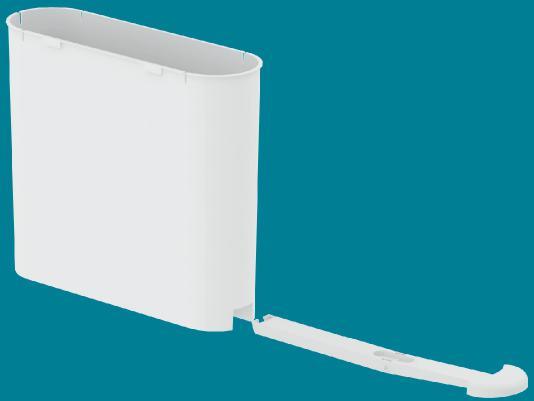

The modesty flap equipped with Invizi-Touch® technology mitigates the risk of cross-contamination and protects against harmful germs by preventing bacterial buildup.
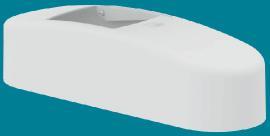
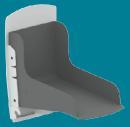

Made in the UK

www.vectairsystems.com info@vectairsystems.com








Living up to expectation? (continued from page 26)
working order as well as being well stocked and easy to maintain,” he said. “It also means organisations must carefully consider the hand hygiene facilities they offer. After all, one of the primary functions of a washroom is to ensure that its occupants can leave with clean hands.”
According to Wakefield, washroom users are becoming increasingly unwilling to touch dispensers, taps and dryers. “This is particularly the case if the fixtures look unclean or are leaking,” he said. “The fact that so many different people are touching a dispenser’s pump to access the product might put many people off cleaning their hands at all.”

Touch-free dispensers are becoming increasingly popular, he says. “These are intuitive to use and release the exact dos-



Les toilettes collectives varient par la forme et la taille. Certaines ne sont que fonctionnelles et ne contiennent que l’essentiel. D’autres témoignent d’une grande volonté de séduction à l’égard du visiteur. Mais qu’attend vraiment le visiteur de toilettes collectives ? La sécurité et l’hygiène ne l’emportent-elles pas sur l’esthétique ?
age every time to reduce mess and ensure a positive experience.”

Fast access and ample space are other key requirements of any washroom, he says. “Users are unwilling to wait around in cramped or congested washrooms, so businesses should think about how people will move around the space,” he said. “They should then install equipment accordingly – for instance, choosing slim, wall-mounted dispensers for smaller washrooms. And while sustainability is also growing in importance, performance will always be the key driver.”
Like other commentators, Vectair’s vice president of marketing Chelsey Schwartz believes most visitors expect their washroom environment to align with the facility’s brand.
Waschräume gibt es in vielen Formen und Größen. Einige sind rein funktionell und bieten nur das Wesentliche. Andere gehen einen Schritt weiter, um Besucher zu beeindrucken.Doch was erwarten Besucher tatsächlich von einem Waschraum? Ist eine sichere und hygienische Umgebung wichtiger als die Ästhetik?

“Your impression of a washroom is just as important as any other guest-facing space and its atmosphere should reflect that,” she said. “So everything should match the ambience your brand wants to deliver from the wall coverings to how the washroom smells and the quality and type of hand care provided.”
Most people want a clean, safe and hygienic washroom above all else, she says. “Operators should therefore focus on making sure this is reinforced when a customer enters the room,” she said. “It should start with a tidy space and continue through to full soap and towel dispensers and a fresh scent.

“Facilities should focus on excelling at the basics. And they should only elevate the experience once they have mastered all the essentials.”
Le sale da toilette sono di varie forme e dimensioni. Alcune sono puramente funzionali e offrono soltanto i servizi minimi essenziali. Altre invece fanno tutto il possible per fare colpo sui visitatori. Ma cosa vuole veramente il pubblico da una sala da toilette? Un ambiente sicuro e igienico è più importante dell’estetica?
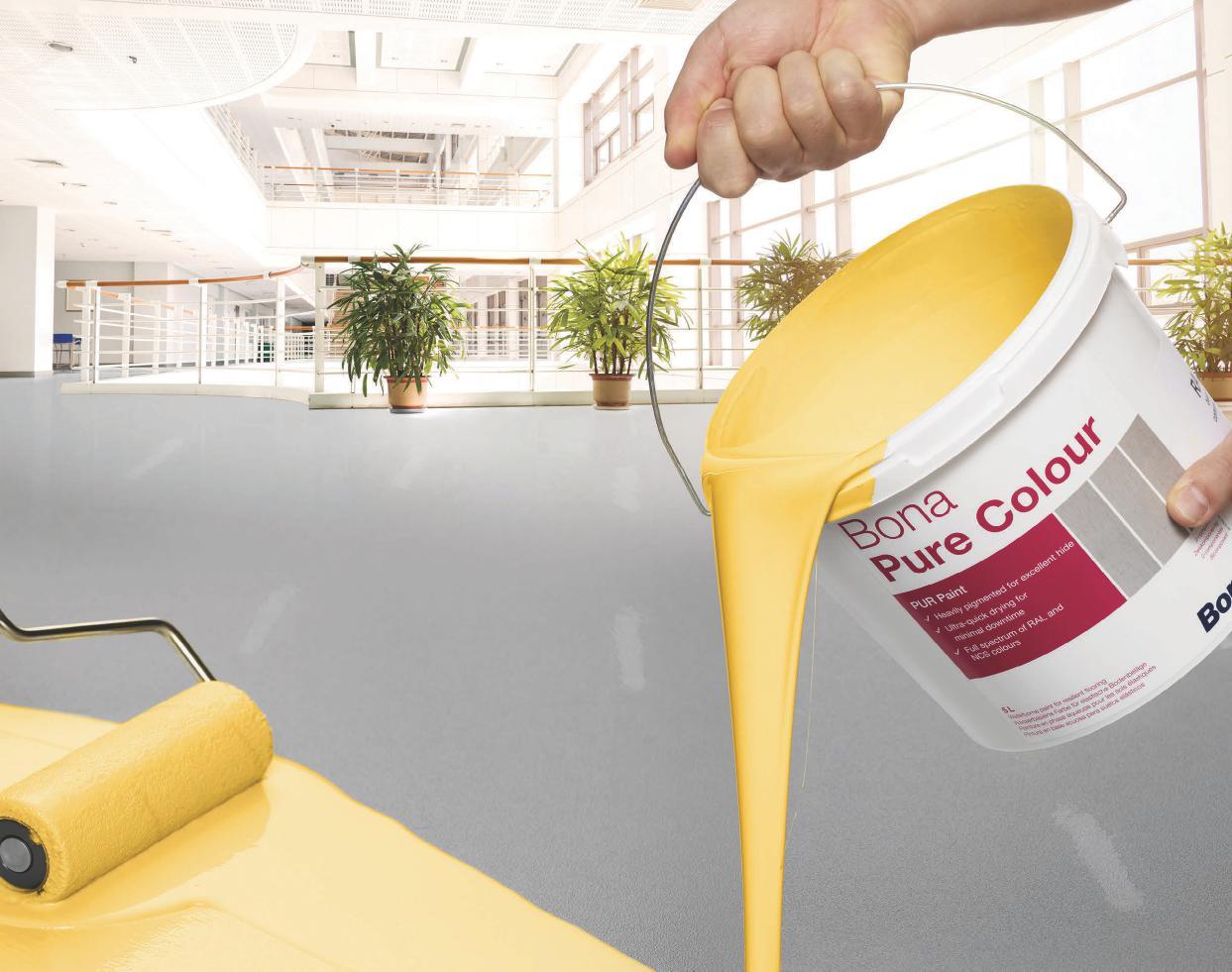
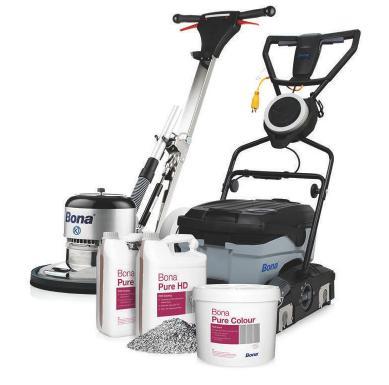

• Dans sa nouvelle version, le système de rejets sanitaires SIMPLE de Femcare de Vectair Systems comporte un moindre nombre de composants.
• La machine de nettoyage oscillante SHOCK de Motorscrubber est conçue pour travailler autour de sanitaires et de piédestaux, longer des parois, et traiter des cabines de toilette.
• Le système Identity Soap 1000 de Lucart Professional comprend des savons à ingrédients naturels produits sans occasionner de cruautés.
• Le distributeur Intellicare de Diversey pour l’hygiène des mains a reçu un agencement modernisé et une vitre teintée.

• Le distributeur de produits sanitaires HygoComfort de Hygolet peut contenir 180 tampons et 40 serviettes hygiéniques.
• Airdri a lancé le PureDri, un appareil hybride pour le séchage et la désinfection des mains.
• L’appareil XLERATORsync d’Excel Dryer forme un ensemble comportant un distributeur de savon, un robinet et un sèche-mains.
• Das neue Hygienebehältersystem Femcare SIMPLE von Vectair Systems wird jetzt aus weniger Komponenten hergestellt.
• Die oszillierende Reinigungsmaschine SHOCK von MotorScrubber wurde konzipiert, um um Toiletten und Sockel herum, unter Klosettzellen und an Wänden entlang zu reinigen.
• Das Identity Soap 1000-System von Lucart Professional umfasst tierversuchsfreie Seifen, die aus natürlichen Inhaltsstoffen hergestellt werden.
• Diversey bietet eine neue Version des Handhygienespenders Intellicare, mit modernem Design und getönten Fenstern.
• Der Hygieneproduktespender HygoComfort von Hygolet fasst bis zu 180 Tampons und 40 Damenbinden.
• Airdri hat die PureDri-Einheit vorgestellt – ein Hybridsystem für Händetrocknung und -desinfektion.
• Der XLERATORsync von Excel Dryer ist ein Multifunktionssystem mit Seifenspender, Wasserhahn und Händetrockner.
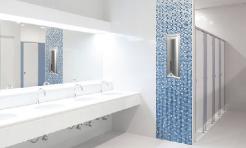
• Il nuovo sistema di smaltimento di rifiuti sanitari Femcare SIMPLE della Vectair Systems è ora prodotto con un numero minore di componenti.
• La macchina per le pulizie oscillante SHOCK della Motorscrubber è progettata per pulire intorno ai wc, piedestalli, sotto i cubicoli e lungo i muri
• Il sistema Identity Soap 1000 della Lucart Professional vanta saponi etici e cruelty-free prodotti con ingredienti di origine naturale.
• La Diversey propone una nuova versione del suo dispenser per l’igiene delle mani Intellicare, di design moderno e con vetro oscurato.
• Il dispenser di prodotti sanitari HygoComfort della Hygolet contiene fino a 180 tamponi e 40 assorbenti.
• La Airdri ha lanciato la sua unità PureDri, un sistema ibrido di asciugatura e sanificazione delle mani.
• XLERATORsync, prodotto dalla Excel Dryer, è un sistema “tutto in uno” che include dispenser di sapone, rubinetto e asciugamani ad aria.
The new Femcare SIMPLE sanitary disposal system from Vectair Systems is made up of a reduced number of components, but with maximum safety features for the user and the cleaner the company says. The 23-litre bin ensures sanitary waste is disposed of hygienically, safely and responsibly, in a more efficient way.
The Identity Soap 1000 system from Lucart Professional boasts a range of 100 per cent Made in Lucart soaps. All soaps are cruelty free, made with ingredients of natural origin and are biodegradable. Four fragrances are available.
Premium Liquid is an EU Ecolabel-certified liquid formulation characterised by a soft, creamy texture and camellia scent enriched with Argan Oil.
Hygolet says its HygoComfort feminine hygiene product dispenser is compact and easy to maintain. It holds up to 180 tampons and 40 sanitary towels. Many schools, businesses and public institutions are now providing free menstrual hygiene products in order to promote menstrual health and tackle period poverty. The lockable HygoComfort unit is suitable for all these applications and comes in stainless steel or white powder coated finishes. hygolet.com
The bin features a robust manual foot pedal and a hinged chute with front opening, to hide waste and lock in odours. The front-opening chute makes for optimum location flexibility in the washroom.
Invizi-Touch on the modesty flap helps reduce the risk of cross-contamination and protects against bacterial build-up. Femcare antimicrobial scented liners with odour eliminating properties are also available.
www.vectairsystems.com
MotorScrubber’s new low profile oscillating cleaning machine, SHOCK, is designed to tackle the cleaning challenges presented by small spaces such as washrooms. It can clean around toilets, pedestals, under cubicles and along walls.
The company has also developed the SHOCK Pad, which will be available from June. Made up of thousands of micro-blades, each fibre is angled to agitate and gently scrape dirt from textured floors. The non-scratch material cleans all smooth and textured hard floor surfaces.

www.motorscrubberclean.com
Frequent Foam, meanwhile, is a hypoallergenic and EU Ecolabel-certified foam soap, enriched with aloe vera extract and fragrance-free.
Enriched with almond oil and floral notes is Classic Foam soap, while Essential Foam has a neutral fragrance and is suitable for use in any application.
The system is completed by the Lucart Identity dispenser, in black or white finishes.
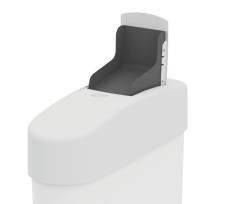
www.lucartprofessional.com
Diversey has developed a new version of its Intellicare hygiene product dispensers with a modern design and dark tinted window. It maintains the same hybrid functionality, which means if the battery runs out it can be used as a manual unit.
The two new models are the Hybrid Dispenser Chrome and the Manual Dispenser Chrome. The chrome finish is designed to blend into the interior and provide visitors with an effective hand hygiene solution. Safety is guaranteed as this is a closed system and minimal labour and maintenance are required thanks to the 1.3-litre pouch.
www.diversey.com
Airdri has developed the PureDri unit, a hybrid hand drying and sanitisation system claimed to eliminate 99.8 per cent of airborne viruses in 75 minutes and 99.8 per cent of surface bacteria within four hours.
Designed to deliver infection control, powerful jet hand drying function with 200-watt motor and high energy efficiency, PureDri aims to reduce contamination risk at every stage.
A sanitising plasma formed of hydroxyl radicals, super-oxide ions and low levels of ozone, is focused both around the user and on to hands at the end of the drying cycle.
www.airdri.com
Excel Dryers offers an integrated sink system featuring its XLERATORsync hand dryer.
Set on a custom natural acrylic stone wash basin, the built-in dryer is positioned alongside a motion-activated tap and soap dispenser. This compact layout allows users to wash and dry their hands in a single location without having to touch it.
The dryer’s HEPA filtration system eliminates 99.999 per cent of viruses.
www.exceldryer.com
Tork manufacturer Essity says it offers soaps and sanitisers to secure hand hygiene for all.

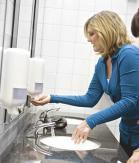
hands and helps to remove food fat residues while also tackling viruses and bacteria.
prevent malodour; and ‘easy closing’ bin liners with unbreakable drawstrings.
• Le fabricant Tork Essity propose une gamme complète de savons et de désinfectants pour les mains.
Particularly suitable for frequent hand washing are Tork Sensitive Soaps which have been certified as allergy-friendly by ECARF. They are suitable for
Also designed for use in food preparation environments is Tork Odour-Control Liquid Soap. This removes pungent smells such as onion, garlic and fish, and the perfume and colour-free formulation is kind to the skin. www.tork.co.uk
soothing lotion may be applied before and after shifts and as required throughout the day.
Tork Mildly Scented Soaps provide a gentle hand wash while Tork Antimicrobial Hand Washing Liquid Soap works well in the food sector. Containing plant-based ingredients, Tork Antimicrobial Hand Washing Liquid Soap is gentle on the
The Nova Auto version is the battery-operated version. kennedy-hygiene.com use in healthcare in conjunction with Tork Sensitive Moisturising Hand Lotion and Hand Cream. The
Kennedy Hygiene Products says its Nova feminine hygiene unit is functional and service-friendly. Now available in the premium finishes Designer Grey and Chrome - as well as the Kennedy Arctic White colour - Nova is made for fast servicing. With its 22-litre capacity it boasts a compact design.
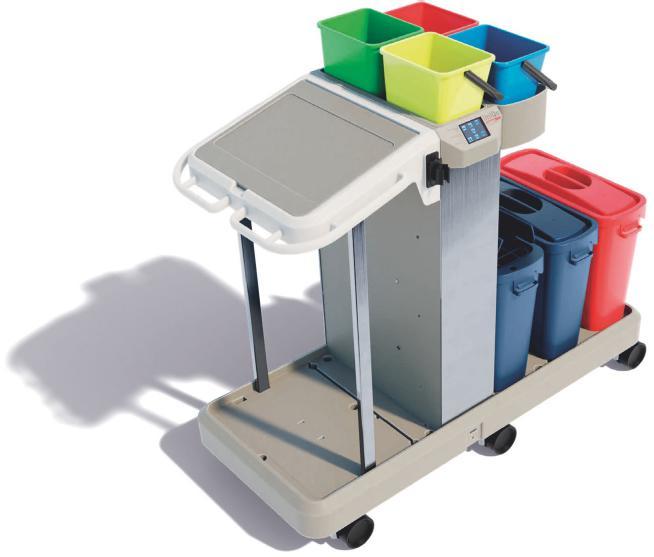
Optional consumables include black lid inserts that protect against soiling and are easy to attach and remove; germicidal powder sachets that inhibit microbial growth and
The Cheeky Panda’s Biodegradable Anti-Bacterial Multi-Surface Cleaning Wipes are made with fast-growing, 100 per cent biodegradable, FSC certified bamboo and are free from plastic. The wipes are sustainable and renewable.
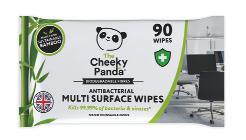
They are free from fragrance, fertilisers, pesticides and chlorine bleach, and are simply made with purified water, and plantderived cleaning agents. uk.cheekypanda.com
• L’appareil d’hygiène féminine Nova de Kennedy Hygiene est proposé en finitions nouvelles.
• Les lingettes antibactériennes de nettoyage multi-surfaces de Cheeky Panda sont confectionnées à 100 pour cent en bambou biodégradable, et sont exemptes de matières plastiques.
• Tork-Hersteller Essity bietet eine umfassende Produktfamilie mit Handseifen und Händedesinfektionsmitteln.
• Die Damenhygieneeinheit Nova von Kennedy Hygiene ist jetzt mit neuen Finishes erhältlich.
• Die antibakteriellen MehrzweckReinigungstücher von Cheeky Panda werden aus 100 Prozent biologisch abbaubarem Bambus hergestellt und sind plastikfrei.
• La Essity, produttrice della marca Tork, offre una ampia linea di saponi per le mani e igienizzanti.

• L’unità di igiene femminile Nova della Kennedy Hygiene è ora disponibile in nuove finiture.
• I panni antibatterici per la pulizia di vari tipi di superfici della Cheeky Panda sono prodotti al 100 per cento in bambù biodegradabile e non contengono plastica.































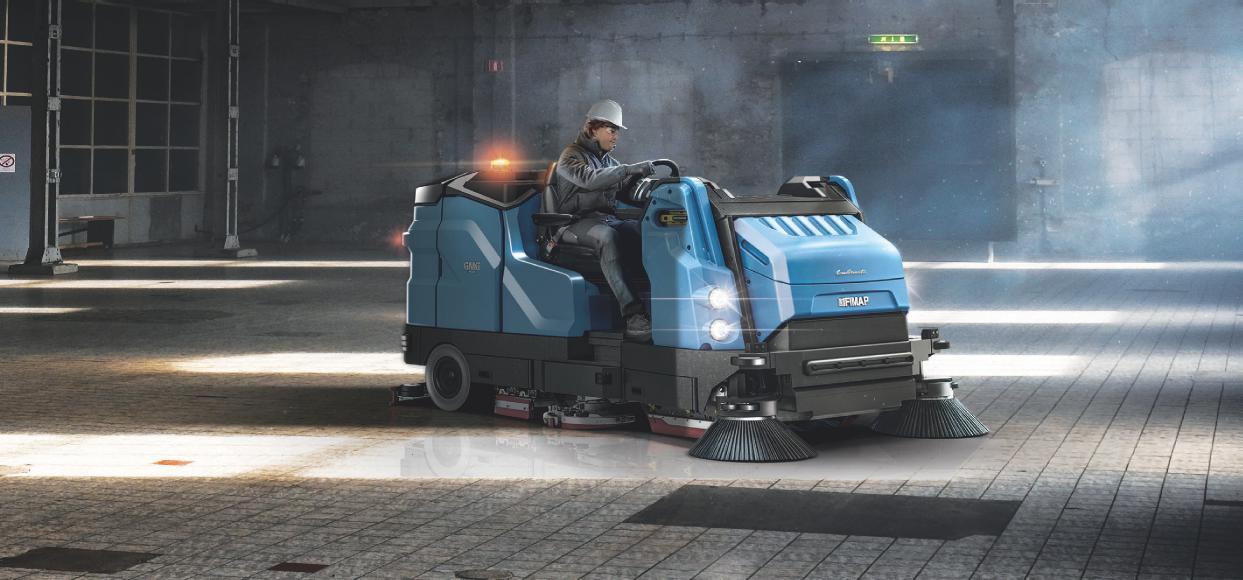
































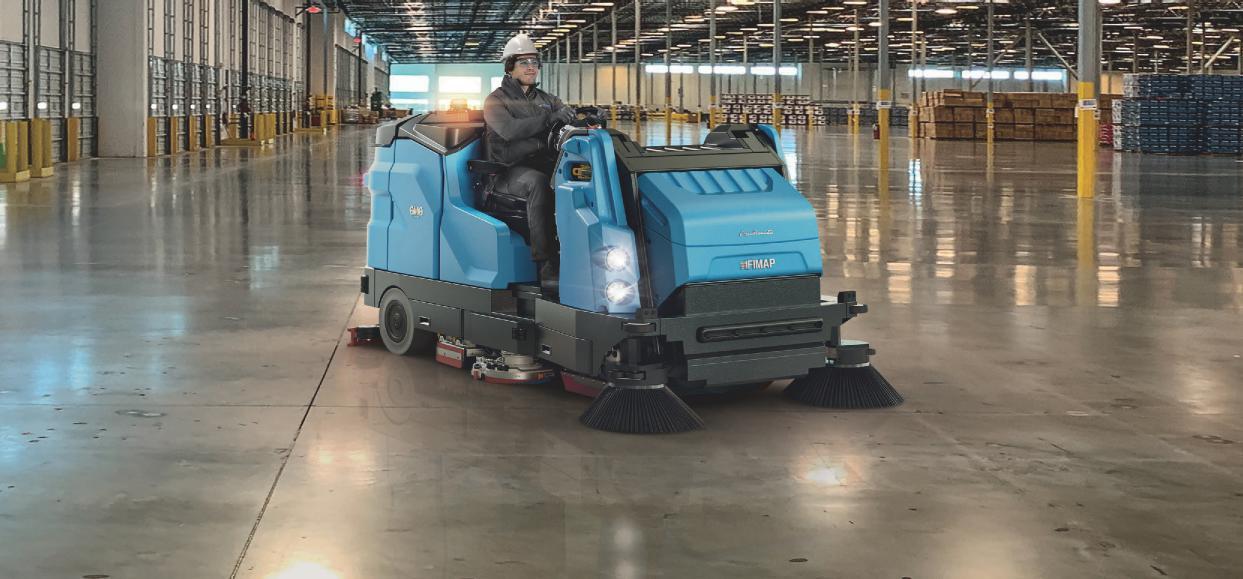

THE INCORPORATION OF A fragrance or odour reduction technology can be quite a process. There are many fragrances and technologies available on the market, of which the effects can differ based on the formula and application of the product they are being incorporated in. After making a decision on which fragrances and/ or technologies are to be used, it is time to create some pilot batches. Such pilot batches typically receive a wide array of testing, part of which can be sensory and instrumental (chemical) odour analyses.
The first step in most analyses is the sample preparation. Depending on the research question, assays can range from a laboratory setting to real life pilot studies. Some examples of test designs related to anti odour cleaners and efficacy determination of cleaning services will be described in this article.
Cleaning products can be designed to help against specific odour issues, like pet odours. Removing these odours can be a difficult task for consumers, especially for certain types of surfaces such as sofas and carpets.
An example is a cleaning product which has been designed to remove the odour of cat urine from carpets. In order to analyse the efficacy of a product with these characteristics, three different test conditions with cat urine can be created. One condition being the uncleaned carpet, or the untreated condition. The other conditions are carpets which are cleaned with the new product and with a reference product.
Testing could be done with a synthetic malodour mixture which represent cat urine odour. However, in order to fully understand the odour reduction efficacy of the cleaning product, working with real cat urine will give more insights. Cat urine can be collected by using special fillings for cat litter boxes. The urine of multiple cats should be used. This is not only recommended to get enough urine for the test, but also as the odour will vary naturally and including multiple cats will provide a
more representative odour.
The cat urine is then applied evenly to a large carpet tile and left for a few hours. In a real usage scenario the ‘urine incident’ is not likely to be found out immediately, and the cleaning product will thus not be applied immediately. The carpet tile is then cut into even strips for the three different testing conditions. For the untreated condition, the carpet is not cleaned. For the new product condition and the reference product conditions, the carpet is cleaned according to the use instructions of each product. The carpet tiles are then placed inside three different climate chambers. The temperature, relative humidity and air flow of the emission chambers can be changed, depending on the environmental conditions for which the product needs to be tested.
After a few hours, or days, depending on the research question, the odour samples are ready to be collected. Samples of the outgoing fixed air flow, which has been blown over the carpet, can be taken from the sampling ports of the emission chamber. The samples can be collected inside Nalophan bags for further sensory analyses and on thermal desorption tubes for further chemical analyses.

Cleaning services are not only used for the regular maintenance of buildings; their expertise can also be needed in difficult cases such as after fire damage or spills in production facilities. The removal of cigarette smoke odour after a property or vehicle has been rented is a recurring situation, for which rental companies also require specialized cleaning services.
When assessing the odour reduction efficacy of a cleaning service, at least two conditions have to be analysed. The first condition is the odour of the room/vehicle just before the cleaning has started, the pre-cleaning condition. The second condition is the odour after the cleaning. Multiple ‘after cleaning’ samples can be taken. Directly after the cleaning, the odour of the used cleaning products might
Odour plays an important role in the cleaning products industry. Fragrances can be added to products to elicit specific associations and emotions, or to mask a malodour. Specific technologies have been designed to battle malodours such as tobacco and pet odours. Lieke van Genderen at Olfasense tells us more in this two-part report.
be noticeable, creating a masking effect on the malodour. For returning odour issues, taking a sample after a few days can also provide valuable proof.
Taking a sample from a room, or vehicle interior, is often done using the so called lung-method. With this method, a Nalophan bag is placed inside a special sampling container. The Nalophan bag has an open connection towards the rooms indoor air. A vacuum is then created inside the container, resulting in the air from the room being drawn into the Nalophan bag. The duration of the sampling can be varied. For a more homogenous sample, taking a sample over a longer time is recommended. A sampling time of three replicates of 30 minutes is generally used for environmental odour analyses. After the set sampling time, the Nalophan bags with the odorous samples can be used for sensory analyses. In addition, with the use of a pump, the odorous air can also be sampled on thermal desorption tubes for chemical analyses. It is not recommended to have panellists evaluate odour directly
Continued page 36
The science of odour (continued from page 35)
from inside the room, as visual influences and sensory adaptation could then become a problem.
The sampled air can be analysed using sensory and instrumental (chemical) methods. With sensory odour analyses, trained odour panellists take part to evaluate the odour perception of the test samples. In the case of instrumental methods, the chemical composition of the samples can be determined.
The first consideration when evaluating the odour of a sample, is the use of an internal or external sensory panel. Internal panels, who are trained odour analysts,
L’odeur joue un rôle important dans l’industrie des produits de nettoyage. On peut y ajouter des fragrances de nature non seulement à masquer de mauvaises odeurs mais également à susciter des émotions spécifiques à travers des associations particulières. Des technologies ont été élaborées pour lutter contre les mauvaises odeurs, telles que celles émanant du tabac ou des animaux familiers. Lieke van Genderen, de la société Olfasenses, nous en dit plus.
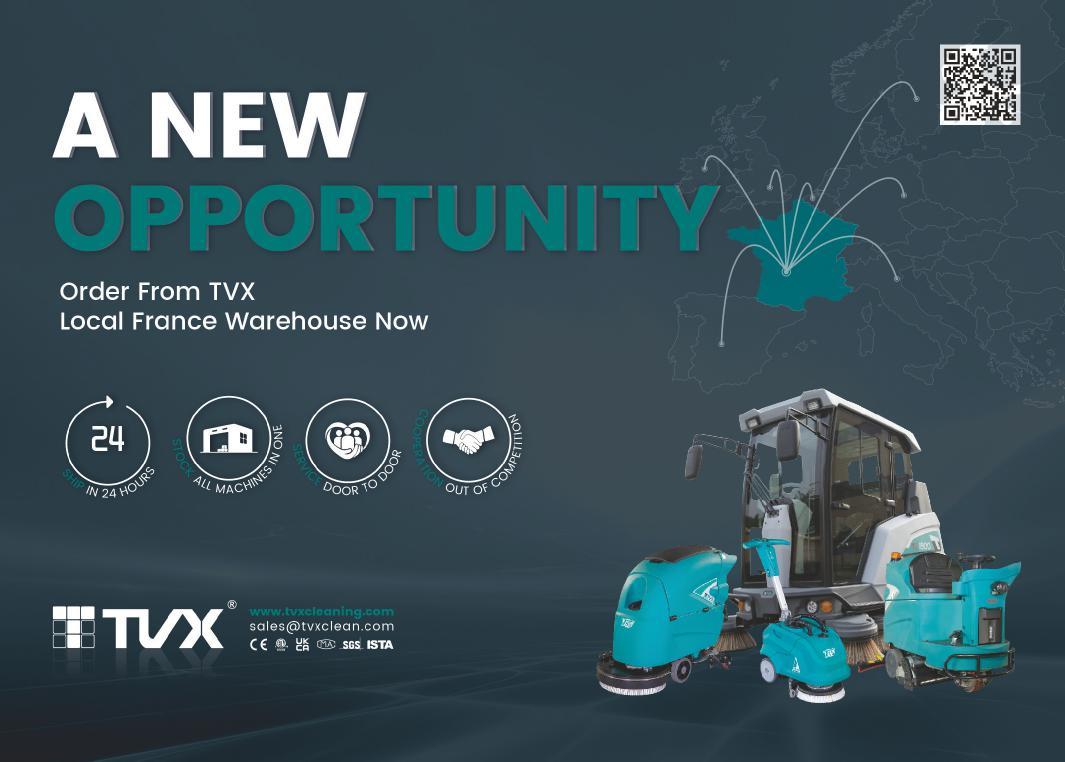
often participate in the beginning stages of an R&D process and/or for QA/QC purposes. Most of the cleaning product manufacturing companies have their own internal panels.
In the first stages of new product development, the internal panel can be used to exclude pilot batches due to, for example, a much too weak or strong odour, or an odour character which does not fit with the company or brand. Once the product has been developed, the internal panel can perform regular batch analyses to check that the product continuously meets their quality criteria.
As with most analyses, the internal panel will require regular training to be able to deliver high quality results. In
Geruch spielt eine wichtige Rolle in der Reinigungsproduktbranche. Duftstoffe können zu Produkten hinzugefügt werden, um bestimmte Assoziationen und Gefühle hervorzurufen oder um unangenehme Gerüche zu überdecken. Es wurden bestimmte Technologien entwickelt, um unangenehme Gerüche wie etwa Tabak- und Haustiergerüche zu bekämpfen. Lieke van Genderen (Olfasense) erzählt uns mehr.
addition to regular training, the olfactory capabilities of odour panellists need to be checked regularly as our sense of smell is known to vary.
External panels, who are trained panellists from independent entities (eg,., testing laboratories) are often used when a higher analysis quality is required, and for impartial claim support of the final products and services. Specialised odour laboratories have access to equipment which has been designed for odour sampling and analyses, and the panellists have been selected and trained according to strict protocols.
www.olfasense.com
• The second part of this report will be published in the June/July edition
Gli odori hanno un ruolo importante nell’industria dei prodotti di pulizia. Le fragranze possono essere aggiunte ai prodotti per provocare associazioni ed emozioni, oppure per mascherare i cattivi odori. Specifiche tecnologie sono state progettate per combattere i cattivi odori quali ad esempio quelli del tabacco e degli animali domestici. Ce ne parla Lieke van Genderen della Olfasense.
No spells or magic formulas are needed: attaching and releasing mops withoutbending orhandcontact is finally a reality with Pockety We are waiting for you at STAND










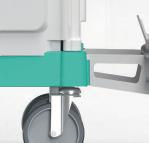
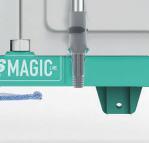
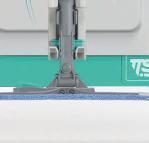
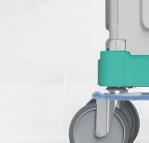


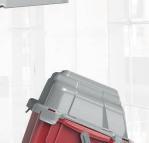


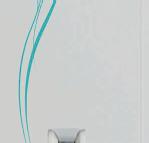




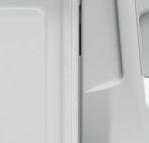
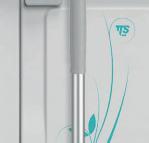






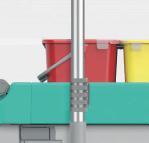
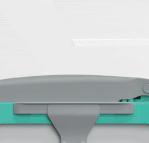
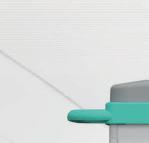




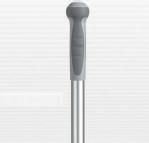





















Artificial intelligence has transformed our lives in ways that were the stuff of science fiction not so long ago and its influences are set only to proliferate over coming decades. Hartley Milner examines the impact of AI on the business world, for better or worse.
HOW WOULD YOU FEEL ABOUT interacting face-to-face with a computergenerated ‘human’? I mean a fully self-learning AI avatar that can hold lucid conversations, give informed answers under close interrogation and make intelligent and creative decisions, all while maintaining eye-contact and responding to your facial expressions, gestures and even emotions.
Such super-smart humanoids are being touted as the next big leap in the evolution of AI. And the technology is advancing so rapidly that by 2050 small businesses in the UK will be run by personal avatars, according to digital bank Virgin Money. Avatars will be programmed by SME leaders using their company’s persona and be authorised to carry out functions and make decisions on their behalf, leaving them free to focus on the most important tasks.

One reason for the rise of AI avatars in use today is that people say they prefer seeing a human face when interacting with a business or making a purchase. Because more sales now take place online than at retail locations, the technology gives transactions a human face that a website or app cannot replicate. As avatars become evermore sophisticated, you will find yourself engaging with them as naturally as you would a human colleague, their developers claim.
So what makes these digital clones so damn smart? Simply put, avatars learn through deep-learning algorithms programmed in to make them more proficient each time they engage with a user, mimicking how we ourselves learn, adapt and behave in certain situations. Their ability to engage in conversations with people is derived from using natural language processing (NLP) algorithms. AI avatars are a type of chatbot, but more advanced in terms of interaction.
But perhaps they are not quite as smart just yet as the hype suggests. “AI technology has made amazing strides in recent years, but at this stage of development its promise does not always deliver the reality,” Miranda Pearman,
a tutor at the Birmingham Institute of Technology, told ECJ. “For one thing, most avatars still visually resemble cartoons more than real humans and lack the animation in their modelling that would make their movements and gestures totally convincing.
“This may be fine for some applications of the technology, like in marketing, ecommerce, customer service and training. But in our face-to-face interactions with real people we consciously or subconsciously pick up signals from their facial expressions – little things like a slight raise of the eyebrows or the briefest hint of a smile – that help us determine if we can trust or believe what they are saying or thinking.
“Because virtual humans lack the ability to think in the way we do we don’t get these subtle, spontaneous responses in our interactions with them. And yet nonverbal signals make up a huge part of daily communications. In fact, body language may account for between 60 to 65 per cent of human communications. More importantly, however brilliant virtual humans may be
at processing data quickly, they currently lack the cognitive ability to engage with us on our intellectual level, which could make having reactive conversations with them difficult and frustrating.”
And creating humanlike AI able to process information or think like humans will be crucial if the technology can ever to be fully relied upon, according to research by the University of Glasgow’s School of Psychology and Neuroscience. The study team used 3D modelling to analyse the way deep neural networks – part of the broader family of machine learning – are able to process information to learn how their processing matches that of humans.
Professor Philippe Schyns, who heads up the university’s Institute of Neuroscience and Technology, said: “When building AI models that behave like humans, for instance to recognise a person’s face whenever they see it as a human would do, we have to make sure that the AI model uses the same information from the face as another human would do to recognise it. If the AI doesn’t do this, we could have the illusion that the system works just like humans do but then find it gets things wrong in some new or untested circumstances.”
It is hoped the research will lead to the creation of more dependable AI technologies that behave more like us and make fewer unpredictable errors, and when they do drop a clanger make it easier to understand why. AI tech developers are already racing to be the first to crack the ‘thinking machines’ conundrum. Meanwhile, tech corporation Meta (formerly Facebook) is investing in software capable of learning about the musculoskeletal system of the human body to make avatars more relatable for us.
ChatGPT
Another piece of AI wizardry that has got us all talking about it of late is ChatGPT… a generative AI language model that can create various types of content, including text, imagery, audio and synthetic data. You may recall that its emergence late last year triggered alarm among educationists that students could use the software to write essays or answer homework questions. Lecturers at UK
L’intelligence artificielle tend aujourd’hui à transformer nos vies alors qu’il n’y pas longtemps elle relevait de la science-fiction. Son influence ne pourra que croître les années à venir. Hartley Milner se penche sur les effets - positifs ou négatifs - de l’IA sur le monde des affaires.
universities have been urged to review the way in which their courses are assessed amid concerns that students are already using the potent new tool to write their dissertations.
However, with close scrutiny, generative AI is proving a boon to businesses, having applications across a range of functions, including:
• Marketing & sales – crafting personalised marketing, social media and technical sales content and creating assistants aligned to specific businesses, such as retail;
• Operations – generating task lists for efficient execution of a given activity;
• IT/engineering – writing, documenting and reviewing codes;
• Risk & legal – answering complex questions from vast amounts of legal documentation, and drafting and reviewing annual reports;
• Research & development –accelerating drugs development through better understanding of diseases and the discovery of chemical structures.
Now developer OpenAI has launched an upgraded version, GPT-4, which the company claims “is more reliable, creative and able to handle much more nuanced instructions”. Plus it can recognise images and provide answers in text, and has a sense of ethics more firmly built into the system than the old version. “GPT-4 is 82 per cent less likely to respond to requests for disallowed content and 40 per cent more likely to produce factual responses,” OpenAI says. But it cautions: “Despite its capabilities, GPT-4 has similar limitations to earlier GPT models: it is not fully reliable, has a limited context window and does not learn from experience.”
Issues of reliability around artificial intelligence, and therefore trust, are a concern for the European Union, which is legislating for how it is used. The EU AI Act – expected to be in force by the end of this year – will regulate high-risk AI use in areas such as law enforcement, infrastructure, product safety, justice and surveillance, and where it could be used to generate ‘deepfake’ content or throw up cyber security threats.
Today, artificial intelligence is proving
Künstliche Intelligenz hat unser Leben auf eine Art und Weise verändert, die vor nicht allzu langer Zeit in den Bereich der Science Fiction gehörte, und ihre Auswirkungen werden sich in den kommenden Jahrzehnten nur weiter ausbreiten. Hartley Milner untersucht die Auswirkungen von künstlicher Intelligenz auf die Geschäftswelt, mit allen Vor- und Nachteilen.
its worth in a supporting role rather than as a substitute for human intelligence and ingenuity. AI currently has difficulty carrying out common sense tasks in the real world. Its big strength is that it can analyse and process troves of data many times faster than the human brain and then come back with synthesised courses of action. In this way, the user has the information they need to look at various possible scenarios for dealing with a particular situation and make betterinformed decisions.
But what of tomorrow? Experts have identified the top five job categories that are most likely to be replaced by AI:
• Technical – programmer, software engineer, data analyst;
• Media – advertising, content creation, technical writing, journalism, graphic design;
• Data – accountants, traders, marketing research analysts;
• Financial – financial analyst, personal financial adviser;
• Language – customer service, teachers, lawyers.
Miranda Pearman’s last thoughts on AI: “While the technology is good at some jobs it is currently not smart enough to fully replicate the range of skillsets needed to do most types of work. For example, despite the billions spent on developing self-driving vehicles we have yet to find ourselves making journeys in buses, taxis and trains that do not have a human at the controls. The technology is simply not trustworthy enough, and the same situation exists across the vast majority of employment sectors, especially where there is an emphasis on human-to-human interaction, like nursing or teaching.
“Perhaps think of AI as an adolescent child transitioning into secondary education. It is a time when the child gains more advanced capabilities and widen their circle of influences, and learns to think for themselves. It is also the time when they are most open to the influences of educators and others, which helps shape how they turn out in adulthood. It will be down to humans how AI develops and impacts on businesses and therefore on jobs… and, indeed, across every aspect of our lives.”
L’intelligenza artificiale ha trasformato la nostra vita in modi che erano da fantascienza non molto tempo fa e la sua influenza è destinata a profilerare nei prossimi decenni. Hartley Milner esamina l’impatto dell’IA sul mondo aziendale, nel bene o nel male.

EARLIER THIS YEAR, a cleaning chemical spill at a UK hospital resulted in a major clean-up operation in which the emergency services had to be called.
Police officers, fire engines and a decontamination unit were sent to Watford General Hospital after the spill occurred in a maternity unit. The area was cleaned up by firefighters wearing breathing equipment and the area was ventilated to ensure that it was safe.
Also this winter, a tragic chain of events at a California care home led to a care worker being charged with felony elder abuse. A 94-year-old resident of Atria Walnut Creek mistakenly drank a cleaning solution which had been poured into a jug and set down on the breakfast counter by the defendant. Assuming it was juice, an employee subsequently poured it into residents’ drinking glasses – and one of them died as a result.
Chemical cleaners are used safely every day by millions of people all over the globe. Yet these types of stories are constantly coming to light, reminding us of the inherent dangers such products can potentially pose.
Are such press reports helpful? Or do they unfairly damage the reputation of an industry that is becoming safer and more people-friendly all the time?
Damaging reports can actually bring positive results, according to Kärcher’s research and development sales manager Frank Ritscher. “Negative stories about products usually lead to industry players reflecting on the product and improving it where necessary,” he said.
However, safety issues are becoming rarer all the time, he adds. “The chemical industry today is structured completely differently to how it was several decades ago,” he said. “The topics of environment and application safety were not as prominent then as they are nowadays and some critical raw materials that were historically used in large quantities are no longer permitted. And that is a good thing.”
Despite any negative press the industry may receive, cleaning agents are essential for many applications to achieve a good result, he says. But he adds that the term ‘chemical’ can often be misunderstood.
“Everything in the world pertains to chemistry, and many environmentallyfriendly products are, in fact, chemicals,” he said. “And natural raw materials can also be hazardous. Orange oil, for example, is a solvent derived from nature that is frequently flagged up as having a high allergy potential as well as for causing environmental hazards.”
There has been a major trend in recent years towards the development of renewable, plant-based raw materials, according to Ritscher. “Natural fats and oils that form a basis for surfactants and solvents such as alcohols are both examples.”
Sustainability is playing an increasingly important role in the industry because compliance with ecological standards is becoming more and more important among professional users.”
Kärcher is working towards raising public awareness of environmentally-friendly products, according to Ritscher. “Our labels and product marketing explicitly point out the naturalness of individual products and we also rely on environmental certifications,” he said. Kärcher’s eco!perform line of cleaning agents for building service contractors has been awarded the EU Ecolabel and the Nordic Swan Ecolabel.
The company attaches great importance to safety and environmental consciousness, said Ritscher. “We also carefully check on any potential hazards that can arise from using our products,” he said. “And we avoid using these ingredients where possible and if we can’t, we draw attention to them.”
Cases of chemical spills, cleaners experiencing breathing difficulties and the accidental ingestion of chemicals are not necessarily isolated incidents according to Brightwell’s product manager Dmitrii Kononov. “While it is true not all incidents
Mishaps and tragedies regarding chemical cleaning solutions are impacting on the industry’s reputation, says Ann Laffeaty. But what can be done to change this? And is the public’s perception of chemical cleaners entirely accurate at a time when many products are safer and more ecofriendly than ever?

involving chemicals are of the same severity or frequency, they are all indications of the potential risks and dangers associated with the use of chemicals,” he said.
“However, many such incidents can be prevented through proper handling, storage and disposal, along with the use of safer alternatives and technologies. And regulations and standards have been put in place to minimise the risks and dangers associated with chemical use.”
He says any incidents involving chemicals should serve as a reminder of the importance of using these products responsibly. But he admits that press reports of such occurrences can potentially damage the industry’s reputation.
“It is important to note not all chemicals are hazardous, however, and that not every incident involving chemicals is the result of faulty products or negligence on the part of the chemical industry,” he said.
Such incidents often occur due to human error or inadequate safety measures rather than a fundamental flaw in the product or the industry as a whole, he says. “Everyone should recognise that the chemical industry plays a vital role in the economy and in the development of new technologies and products that benefit society,” he said.
That being said, the chemical indus-
Continued page 42
Changing perceptions (continued from page 42)
try needs to take responsibility for the potential risks and hazards its products pose and work towards developing safer alternatives, according to Kononov. “The industry should also do whatever it can to improve safety measures and regulations and to communicate more effectively about the potential risks and benefits of their products to the public,” he said.
While stories about incidents involving chemicals can potentially damage the industry’s reputation, he says it is important to approach these incidents with a nuanced perspective. “The aim should be to work towards improving safety and minimising the risks for all involved,” he said. “And one should note that not all chemicals are hazardous, and that many chemicals are necessary for modern life. They can also provide important benefits such as in the production of medicine, food and other essential products.”
Demand-driven
There has been a growing trend towards safer, less toxic and more sustainable chemical products in recent years, he says. “This has been driven by consumer demand, increased regulatory oversight and advances in technology and scientific research,” said Kononov.

“There has also been a push for greater transparency and disclosure about the ingredients in cleaning products, with some companies voluntarily listing their ingredients on their packaging or websites.
Les incidents et tragédies que l’emploi de produits chimiques de nettoyage a suscités ont affecté la réputation de notre secteur, affirme Ann Laffeaty. La question est donc de savoir ce que l’on peut faire làcontre. On peut aussi se demander si cette perception des nettoyants chimiques, courante parmi le public, se justifie étant donné le nombre élevé de produits sûrs et écologiques que l’on trouve sur le marché actuel.
This has allowed consumers to make more informed choices about the products they use in their homes.”
Brightwell offers a range of dilution systems including EcoMix chemical proportioners which enable chemicals to be diluted safely on site. The EcoShot system provides a controlled amount of chemical at the push of a button while the EcoShot chemical dilution system is designed for use in areas with fluctuating water pressure or no mains connection.
Risks involved
Service provider Cleanology’s head of marketing Kate Lovell agrees with Kononov that cases of chemical spills, cleaners with breathing difficulties and the accidental ingestion of chemicals are not necessarily isolated incidents.
“The use of chemicals comes with big risks, and these need to be correctly monitored and controlled,” she said. “But we still have to use chemicals in some instances - for cleaning hard stone surfaces, for example - since this is the best way of ensuring high-quality results.”
Negative press reports about chemicalrelated incidents have the potential for damaging the reputation of the industry, she says. “However, these reports could also be perceived as being headlinegrabbing accounts in which the facts aren’t always made clear.”
She says some environmental activists could also cause damage to the industry’s
Unfälle und Tragödien im Zusammenhang mit chemischen Reinigungslösungen beeinträchtigenden den Ruf der Branche, sagt Ann Laffeaty. Doch wie kann man dies ändern? Und ist die öffentliche Wahrnehmung von chemischen Reinigungsmitteln gänzlich akkurat, wenn viele Produkte sicherer und umweltfreundlicher sind als je zuvor?
reputation. “However, some of them may be misinformed or they could be slanting their argument to further their cause,” she said. “If chemicals are used properly and in conjunction with eco-friendly products, any negative impacts can be minimised and/or contained.”
She claims the public’s perception of chemical products has been influenced by negative media reporting coupled with a lack of detailed factual information. “Sometimes the use of chemicals is the only way of cleaning a surface,” she says. “And chemical products are becoming safer, less toxic and more sustainable while the general awareness of the variety of eco-friendly products out there is growing fast.”
Cleanology reviews all the chemicals it uses to ensure they are as eco-friendly and as sustainably effective as possible, says Lovell. So, what can be done to change the public’s perceptions of chemicals? “Continued enhanced education will help to create a greater product awareness about chemicals and their environmental credentials,” she replies. “And this would greatly improve people’s perceptions.”
Brightwell’s Dmitrii Kononov says there are several strategies the industry can take to change people’s perception of chemicals and promote the use of safer products. “Companies should market safer, more sustainable alternatives to traditional chemical products and use transparent labelling to disclose more information about the ingredients,” he said.
“And product certification and standards will provide assurance to consumers that products are safe, non-toxic, and environmentally friendly.”
Kärcher is working hard to promote awareness of environmentally conscious products, says Frank Ritscher. “Our product marketing explicitly points out the naturalness of individual products and we rely heavily on environmental certifications,” he said. “We also strive to develop products that require no labelling since these set a good example and remind people that good product performance and quality do not automatically require a product to be labelled as a hazardous substance.”
Incidenti e tragedie che riguardano i detergenti chimici hanno un impatto sulla reputazione del settore delle pulizie, come afferma Ann Laffeaty. Ma cosa si può fare per cambiare questa situazione? E la percezione del pubblico dei detergenti chimici è totalmente accurata in un periodo in cui numerosi prodotti sono più sicuri e più ecologici che mai?
The new ProKart mobile foam system from Seko is a trolleymounted solution that allows users to carry out portable spray cleaning wherever they need to.
electrical connection is needed.
The robust tank withstands heavy use and is compatible with harsh chemicals.
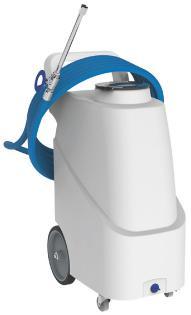
ch.seko.com
From Wetrok comes a range of liquid cleaning agents based entirely on granules - Granuline.
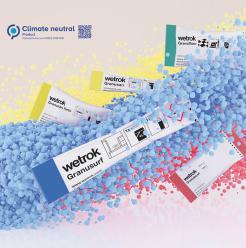
The method is based on the open-mix-clean-principle: open the granulate sachet, mix the
granulate with water and the cleaning solution is ready to use. Overdosage is impossible.
The range comprises five products for what Wetrok says is environmentally friendly cleaning of the entire building. One truckload of granulate replaces six truckloads of liquid chemical canisters.
www.granuline.com
Available in 38- and 95-litre models, ProKart is designed for cleaning of vertical and non-flat surfaces, operating at up to 5.5 bar air pressure with a flow rate of 19 litres per minute.
The rich, thick foam enables extended chemical contact time for a deeper clean, while also spraying high surfaces that might otherwise be impossible to reach safely.
Features include a stainless steel lance and heavy duty nine-metre hose. The needle valve allows air/solution ratio to be finely adjusted to achieve the ideal foam consistency. And the air-driven pump means no
• Seko a lancé le ProKart, un système à mousse mobile monté sur chariot.

• Proposée par Wetrok, la gamme Granuline d’agents de nettoyage et réalisée sous forme granulaire, prête à être mélangée avec de l’eau.
• Neu von Seko ist das mobile Schaumsystem ProKart, das auf einer Karre montiert ist.
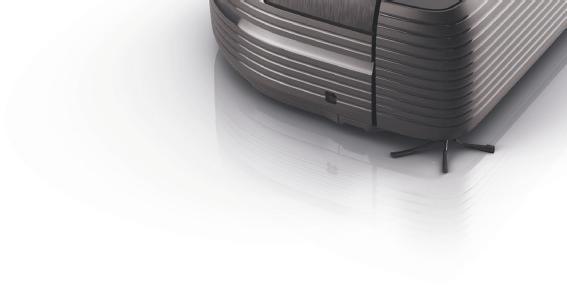
• Die Produktreihe mit Reinigungsmitteln Wetrok Granuline ist als Granulat erhältlich – es muss nur noch mit Wasser gemischt werden.
• La novità della Seko è il sistema erogatore di schiuma mobile montato su carrello ProKart.
• La gamma di prodotti di pulizia Wetrok Granuline è disponibile in granuli, pronti da mescolare con acqua.
industry,” he said. “Moreover, any damage to the floor and subsequent need for reworking due to the wrong application can be prevented if the polishing machine is user-friendly and easy to operate.”
POLISHING A FLOOR should be cost-effective. It should also ideally be carried out sustainably. And it should ensure a high quality result. But the operator’s role in polishing a floor can be critical. Anyone tasked with this important job needs to know what they are doing –otherwise they could potentially cause damage to the surface and put their own welfare at risk.
But how easy does the task need to be? Should the health, safety and well-being of the operator take priority for manufacturers when designing a floor polishing system? And just how important is ease of use at a time when factors such as cost, productivity and results are also all-important?

Ergonomics and ease of operation can be pivotal to the success of any floor polishing operation, says Kärcher’s floorcare product manager Christian Mrowka.
“In general the cleaning result can be improved by reducing the strain involved,” he said. “When cleaners are given the right tools and knowledge for the task they will be protected from chronic physical conditions. And at the same time, better results can be achieved more quickly.”
When a machine or system is used in the wrong way it could have serious consequences, he says. “It could cause permanent damage to the floor or deliver a bad or uneven polishing result,” said Mrowka. “If a machine were to remain in place for too long on a temperature-sensitive floor it could cause permanent damage and possibly burn marks. And damage to the floor could lead to extra work which would substantially increase the costs.”
Floor polishing can be a complicated task depending on the floor type and the polishing method used, says Mrowka. “Ensuring that operatives receive the right training and instruction is essential,” he said. “Manufacturers can also support operators by providing user-friendly machines with simple controls along with triggers that prevent the machine from being started up unintentionally.”
Compact and lightweight machines are particularly user-friendly, according to Mrowka. “They are easier to manoeuvre,” he said. “Large wheels can also make the machine easier to transport. And all handles and operating elements should be easily accessible with the minimum of effort.”
Adjustable handles will add to the machine’s ergonomic use, he said. “These will allow the right working height to be set for each operator,” said Mrowka. “And simple and intuitive control elements will ensure the machine can be operated without extensive training. For example, features such as a central auxiliary impeller ensures easy manoeuvrability even for untrained operators, whereas floating pad drive boards will automatically adapt to uneven floors and ensure the best results.”
central auxiliary impeller that enables the machine to travel consistently in a straight line. It also has simple controls for intuitive handling and an adjustable handle to ensure a comfortable working height, says Mrowka. Also from Kärcher is the BDP 43/400 C which features a soft start and large wheels for ease of transport.
Injury to the operator could be the result of using a floor polishing system that is neither user-friendly nor intuitive, says IPC’s sales enablement specialist Gabriella Bianco.
“People could be injured as a result of moving machinery parts or ejected material,” she said. “Sharp edges could cause cuts or severing injuries while sharppointed components could puncture the skin. Rough surface parts could cause friction or abrasion. And certain elements of the machine – plus any steam or water emitted - could be hot or cold enough to cause burns or scalds while the electricity supply could lead to burns and shocks.”
She says intuitive controls will ensure that the operator immediately understands any machine alerts. “This will help to prevent serious damage to the floor,” she said.
All instruction manuals should be supplied in multiple languages, according to Bianco. “A low machine weight and adjustable handles are also very important,” she adds. IPC single disc machines are said to feature ergonomic handles as well as optimum weight distribution and vibration-dampening technology to improve operator comfort.
It is vitally important that floor polishing systems are easy to use for reasons of health, safety and quality says service provider Cleanology’s head of marketing Kate Lovell. “If a system is neither user-friendly nor intuitive it could result in damage to the floor which would require the need for re-working or replacing it” she said. “Time would be wasted and
He says the issue of ease of use is gaining greater prominence. “Ergonomics can become a competitive advantage for building service providers, particularly in view of the current staff shortages and the increasing cost pressures on the Continued page 46
Kärcher’s compact BDP 50/1500 C is said to be easy to manoeuvre due to a
How do companies ensure that their floor polishing systems are intuitive and user-friendly for the operator? ECJ looks at the importance of ergonomics in floor polishing compared with other purchasing considerations.


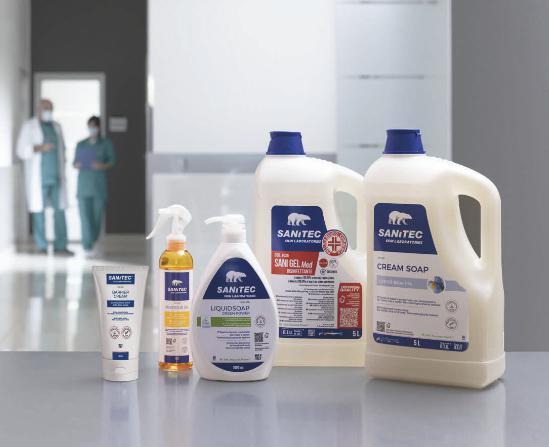
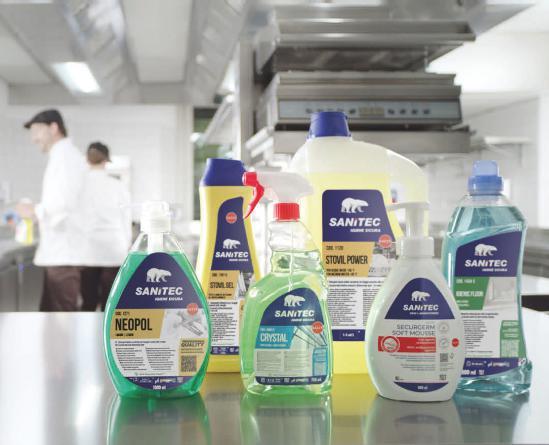
Polishing made easy (continued from page 44)
businesses would be out of pocket. And the operator could also suffer from fatigue and become demoralised.”
She says the type of polishing technique in question will dictate how easy it is to use. “For example, care needs to be taken to choose the right pad colour when carrying out diamond polishing,” she said. “Other systems are set up to work in number order which means you need to follow a simple number sequence. And in these cases it is very difficult to get it wrong.”
Floor polishing machines tend to be easy to use once the operator knows how to do so correctly, according to Lovell. “Training and experience are therefore essential,” she said.
Number ordering and easy step-bystep processes will help to enhance ease of use, she says. “Our operatives are also multilingual which means they require instructions to be relayed in their native language to avoid mistakes,” she said.
Cleanology carries out research and fully tests all its products before handing them over to operatives, says Lovell. “This helps to ensure they are user-friendly and will provide the best results,” she said. “We also offer full training on how to use and maintain them. “
Functional and easy-to-use tools will
improve cleaning outcomes and safeguard the operator’s health, says business development manager for mopping equipment specialist Filmop, Paolo Scapinello.

“The continued adoption of bad posture is one of the main risk factors for musculoskeletal conditions, while repeated wrist flexion-extension can lead to other disorders,” he said. “These sorts of issues can be prevented by means of simple measures such as using ergonomic equipment and adjusting the telescopic handle to the operator’s height. And such refinements can bring great benefits in terms of psychophysical well-being.”
The design of the equipment will have a direct impact on cleaning results, says Scapinello. “Using an uncomfortable product or system results in more strain and decreased productivity coupled with an inferior floor cleaning performance.”
The likelihood of human error also increases in direct relation to the difficulty in using any system, says Scapinello. “The manufacturer must therefore design equipment in such a way as to reduce errors to a minimum,” he said. “Poor ergonomics could lead to the onset of occupational diseases, and this needs to
be considered at the design stage. Certain technical features can make a real difference: a handle that can be lengthened or shortened, for example, can be adapted to suit the task to be performed and to the operator’s height which will help to avoid muscle pain.”
All Filmop equipment is designed to be user-friendly and improve the operator’s working conditions, he says. The company’s ErgoSwing is comprised of a telescopic handle, a turning grip and a mop holder that together facilitate an ‘S’ movement which is said to reduce the level of effort required by the operator.
Good investment
So, is ease of use a high priority for today’s floorcare systems manufacturers and customers? Or do other factors such as cost, productivity, sustainability or the end result matter more than ergonomics?
Ease of use is important - but other factors also matter, says Scapinello. “Floorcare systems should ensure a high performance and impeccable cleaning as well as lower consumption of cleaning solution for a reduced environmental impact,” he said.
Ergonomics, cleaner comfort and ease of use are all key priorities for Cleanology –but so are cost, productivity and sustainability, says Kate Lovell. “Our operations are based on the four pillars of People, Environment, Innovation and Quality and sustainability is always at the heart of our business,” she said.
Ease of use is crucial because it contributes to improved end results and cuts costs by reducing the need for re-working, says Kärcher’s Christian Mrowka. “A machine that is simple to use will also enhance productivity if it can easily travel consistently in a straight line without drifting off course,” he said.
And ease of use, operator safety and a sustainable approach are all key requirements for anyone considering purchasing a single disc machine, says IPC’s Gabriella Bianco. “Cost is still an important factor, but a safe and reliable machine will always be a good investment,” she said.
Que font les fabricants pour que leurs systèmes de polissage des sols soient intuitifs et d’usage aisé pour l’opérateur ? ECJ se penche sur l’importance de l’ergonomie parmi les considérations qui doivent dicter les décisions d’achat.
Wie stellen Unternehmen sicher, dass Poliermaschinen für die Bediener intuitiv und benutzerfreundlich sind? Das ECJ betrachtet die Wichtigkeit der Ergonomie bei Poliermaschinen im Vergleich zu anderen Überlegungen beim Kauf.
Le imprese, come si accertano che i loro sistemi di lucidatura dei pavimenti siano intuitivi e facili da usare per l’operatore? ECJ prende in esame l’importanza dell’ergonomia nella lucidatura dei pavimenti rispetto ad altre considerazioni di acquisto.
Designed specifically to cater for the disinfection and hygiene requirements of healthcare environments is the UniQo line of trolleys from Taxondesigned in collaboration with PL Cleaning Innovation.

Boasting optimum safety for healthcare personnel and operators, Taxon says it has eliminated all the operational steps of possible contamination. The spare mop, for example, never comes into contact with the dirty rinse water that’s already been used.
new exterior design with new colours. There is also an updated operator panel with few buttons for more intuitive operation.
To avoid confusion, the designers have integrated the controls into the software, making it easier to adjust settings.
Gausium says there are also some significant mechanical improvements that enhance
• La gamme Taxon de chariots UniQo vise à garantir le confinement de contaminants dans des environnements hospitaliers.
• Vermop hat eine Reihe von Einweg-Reinigungstextilien unter dem Namen ALLWAYS vorgestellt.
• L’Institut britannique des sciences de la propreté a lancé une application d’audit.
New from Vermop is a line of disposable cleaning cloths and mops called ALLWAYS. Designed for easy wet and damp cleaning, the cloths come in four colours while the mops are available in two performance versions.
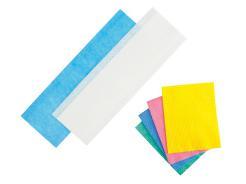
The blue ALLWAYS mop is designed for spot cleaning in areas up to 10 square metres while the white ALWAYS Pro mop is suitable for spaces up to 20 square metres.
Vermop says using disposable textiles saves time and resources that would otherwise be required for washing and logistics. Plus the amount of water and cleaning solution can be reduced.
cleaning performance of the Scrubber 50 Pro. One of the major upgrades is the sensor layout, which enhances the precision and effectiveness of the robot’s navigation capabilities.
The latest version also comes with a rear RGB camera, which improves rear detection capability and works together with the front cameras to enable flexible obstacle avoidance in complex and dynamic environments. gausium.com
The new impregnation system with pressure nozzles precisely doses water and detergent onto the mops - based on the square metres, the type of surface to be treated and the type of dirt to be removed. This, says Taxon, guarantees uniformity of result in each room. It also makes the job of the operator easier because they no longer have to bend down regularly to pick up new mops, rinse them and wring them out. And less water is used.
The management software enables precise programming to be carried out. Each trolley is equipped with three buckets: one for clean mop, one for impregnating and one for dirty mops. The operator fixes the mop from the first bucket to the frame, without bending down or touching it with their hands. It’s then inserted into the second bucket, where it’s impregnated with the right amount of detergent and water using 12 nebulising nozzles. After the operator has used it, the mop is simply dropped into third bucket and replaced with a new one.
www.taxon.it
www.vermop.com
The British Institute of Cleaning Science (BICSc) has launched its Cleaning & Hygiene Audit App. As well as a cleaning inspection, this new solution focuses on checking processes, systems, paperwork and policies.

According to Kimberly-Clark Professional its new ICON dispenser collection offers a humancentric experience. There are three system solutions for hand towels, toilet tissue and skincare - including soap and sanitiser.

The touchless solution features seamless design and hidden towel mode that minimises contact points. Dual sensor technology recognises partially torn sheets and presents a new one before issues occur.
• L’autolaveuse robotique Scrubber 50 Pro de Gausium a bénéficié d’une conception remaniée.
• La gamme de distributeurs ICON de Kimberly-Clark Professional comprend des modèles pour serviettes, papiers hygiéniques et soins de la peau.a
BICSc claims this is the first app built specifically for soft services, saying it will be invaluable in helping to improve cleaning standards. There is a free online app training course available, outlining the benefits and taking an in-depth look at key features. www.bics.org.uk
The latest version of the Scrubber 50 Pro autonomous cleaning machine has just been launched by Gausium - boasting a sleek

The easy-to-read intuitive control panel means less training is required to operate the dispensers, while easily visible lighting and servicing cues indicate when products need replenishing.
A range of colours and faceplates are available, with customised options that can be used for branding or advertising.
www.kcprofessional.com
• Die Produktreihe UniQo mit Reinigungswagen von Taxon wurde konzipiert, um die Eindämmung von Kontaminierungen im Gesundheitswesen zu gewährleisten.
• Sous l’appellation ALLWAYS, Vermop a lancé une gamme de textiles de nettoyage jetables.
• Neu vom British Institute of Cleaning Science ist eine Betriebsprüfungs-App.
• Die robotische Scheuersaugmaschine Scrubber 50 Pro von Gausium wurde mit einem neuen Design aktualisiert.
• Die Spenderreihe ICON von Kimberly-Clark Professional umfasst Modelle für Handtücher, Toilettenpapier und Hautpflege.
• La gamma di carrelli UniQo della Taxon è stata progettata per garantire il contenimento della contaminazione negli ambienti sanitari.
• La Vermop ha introdotto la serie di prodotti tessili monouso per il settore delle pulizie ALLWAYS.
• La novità del British Institute of Cleaning Science è una app di controllo.
• La lavasciuga pavimenti robotica Scrubber 50 Pro della Gausium è stata aggiornata e modernizzata con un nuovo design.
• La gamma di dispenser ICON della Kimberly-Clark Professional include modelli per asciugamani, carta igienica e prodotti per la cura della pelle.
Hand hygiene specialist Dettol Pro Solutions has provided solutions at many large-scale events since the pandemic. Having observed consumer behaviour, it has now made use of behaviourial science in encouraging people to follow hand hygiene protocols. Dr Lisa Ackerley writes for ECJ.
DETTOL PRO SOLUTIONS is the B2B arm of consumer hygiene brand Dettol. Since launching to market in 2021, we’ve been incredibly proud to work on some of the most landmark large-scale events in the UK, including the Platinum Jubilee Pageant, the Birmingham 2022 Commonwealth Games, and the UN’s annual climate change summit COP26.
Large-scale events have been held against a very particular backdrop - in many instances, organisers were bringing crowds or spectators together in large numbers for the first time since the onset of the pandemic. Our team worked closely with event organisers to ensure all these attendees - many of whom were travelling from all over the world - would feel reassured in these spaces and able to focus on the excitement of the event they’d come to be part of. What was interesting for us to observe, however, was consumer behaviour during these occasions as people re-adjusted to being part of a large crowd and seeing live sport or music again - particularly because behavioural science is a crucial ingredient for the Dettol Pro Solutions team when it comes to building protocols.
The methodology we apply to these protocols is ‘targeted hygiene’ - an approach which sees us identifying the most high-touch areas of a space, then pinpointing the timing and frequency required for disinfection of these key areas. As the term suggests, the focus of a targeted hygiene programme is to clean and disinfect when and where it will be most effective, simply cleaning at the end or start of the
Spécialiste de l’hygiène des mains, Dettol Pro Solutions est intervenue dans ce domaine à l’occasion de nombreuses grandes manifestations depuis la pandémie. Ayant observé le comportement des consommateurs, elle recourt désormais à la science du comportement pour encourager les gens à suivre de rigoureux protocoles en matière de lavage des mains. Une scientifique, Lisa Ackerley, écrit pour ECJ.
day is inefficient.
Here’s what we learned from supporting some of the most historic events hosted in the UK over the past 12 months.
The pandemic reshaped the way consumers approach hand hygiene. Research carried out by the consumer insights team at Reckitt, makers of Dettol, in June 2021 showed that 56 per cent of people said they washed or sanitised their hands ‘more frequently’ compared to 2020. Yet one in three (36 per cent) said the frequency of hand-washing or sanitising remained the same with eight per cent declaring they were doing it less. What’s more, between October 2020 and October 2021, one in six were ‘unable to recall’ how often they washed their hands.
‘Hygiene fatigue’ was something we were cognisant of whilst planning with our event partners, and we knew that we needed to lean into our behavioural science expertise to encourage guests to practice good hand hygiene. We’ve always used motivations, effective nudge theory and choice architecture within our hygiene protocols at Reckitt, but we knew it would be especially important when building a hygiene ‘roadmap’ which would need to be adopted for thousands of people at once.
‘Nudging’ change
One of the most widely used approaches for behavioural change at both individual and societal levels is ‘nudging’, which refers to relatively low-cost behavioural change techniques to influence behaviour and decision making. Nudge theory can be effective at influencing the likelihood of someone exhibiting a behaviour - which we saw in action at COP26, where we implemented nudgebased hygiene interventions as part of our protocol. Eleven in every 1,000 people in the Scottish population were infected with Covid-19 virus after the event, but only two in every 1,000 people officially affiliated with COP26 tested positive, according to a report from Public Health Scotland (2021).
We’ve found that introducing a disruptive cue into an environment - like a voice speaking to you out of a sanitising
Der Spezialist für Handhygiene Dettol Pro Solutions hat seit der Pandemie Lösungen bei vielen Großveranstaltungen geboten. Nach der Beobachtung des Verbraucherverhaltens setzt das Unternehmen jetzt die Verhaltenswissenschaft ein, um die Menschen zur Einhaltung von Handhygieneregeln anzuhalten. Dr. Lisa Ackerley schreibt für das ECJ.
dispenser - may be able to interrupt habitual neurological patterns to effect and then sustain behaviour change. Making a behaviour as easy as possible to ‘do’ increases the chances of its success; hence it’s not enough to just instruct people to wash their hands - it’s more about ensuring they have the opportunity to do so and are reminded, encouraged, motivated or nudged to take action at the most appropriate moments.
The talking hand sanitiser dispensers we installed at the Birmingham 2022 Commonwealth Games were a great example of this in action. We installed over 100 of them to be used across the 12-day event with a counter on each unit, and found that spectators sanitised their hands hundreds of times.
In total, we distributed more than 2,800 hand sanitiser stations at the various venues across Birmingham and the West Midlands. We also distributed 33,600 hygiene kits for volunteers, staff and attendees; delivered 10 targeted hygiene protocols for various public areas; and provided 28,000 litres of hand sanitiser.
What does this all mean for the future of the event sector? Happily, the great success of all these events points to a clear appetite among consumers to get back to brilliant big events such as the Platinum Jubilee Pageant.
However, our findings from our work on these events points to a continued need for robust hygiene measures to be implemented to ensure maximum enjoyment for guests. Despite the pandemic having impacted our relationship with hygiene, there’s a danger that if organisations don’t place the necessary gravitas on hygiene measures, consumers may fall foul of hygiene fatigue and revert to poorer hygiene practices.
Organisers must therefore do everything they can to make it easy for everyone to practice good hand hygiene. The experience we have at Dettol, in building behavioural science principles into the overall approach and the success of events such as the Birmingham 2022 Commonwealth Games, show that it is not just what products you make available that matters, but where they are located, the reminders to use them and how people interact with them that makes the difference.
www.dettolprosolutionsth.com
L’azienda specializzata in igiene della mani Dettol Pro Solutions ha fornito soluzioni a molti eventi su larga scala dall’inizio della pandemia. Avendo osservato il comportamento dei consumatori, ha adesso approfittato della scienza comportamentale per incoraggiare le persone a seguire i protocolli di igiene delle mani. Ce ne parla Dr Lisa Ackerley.
